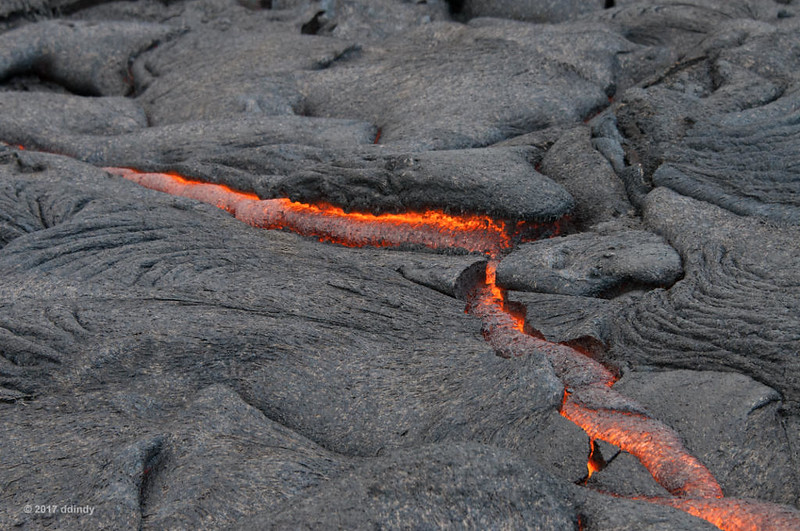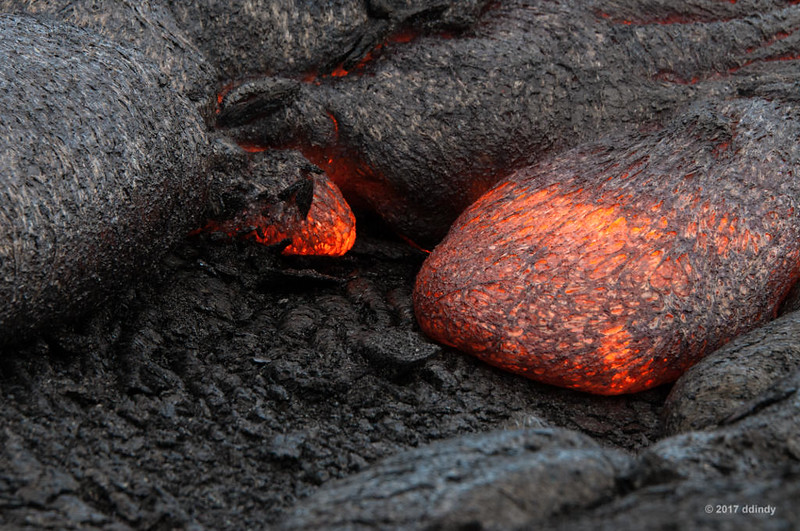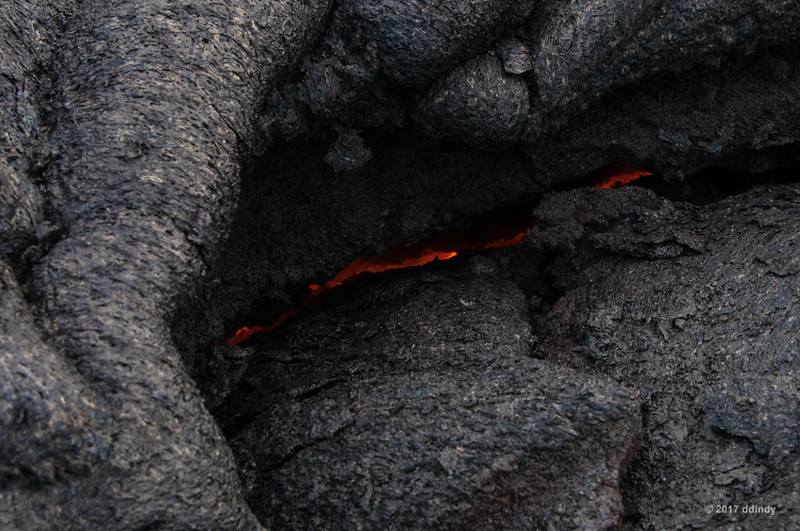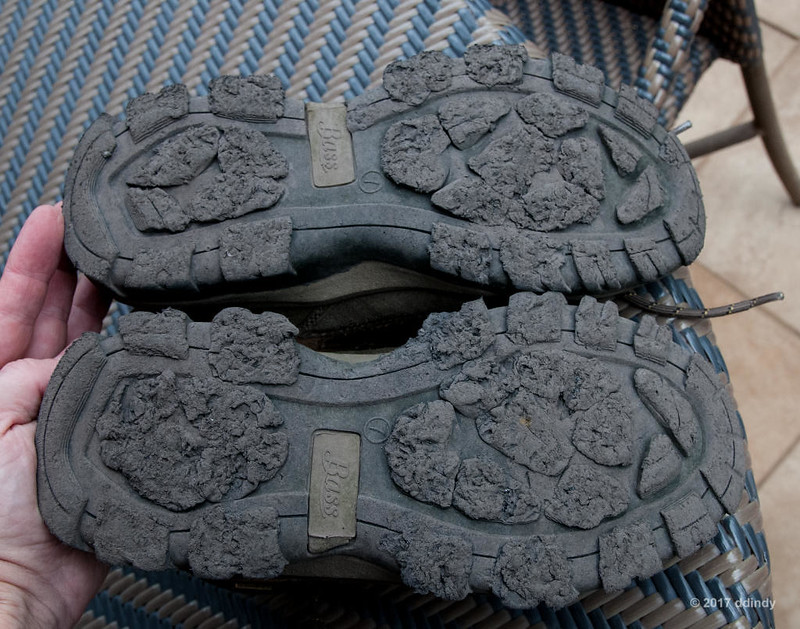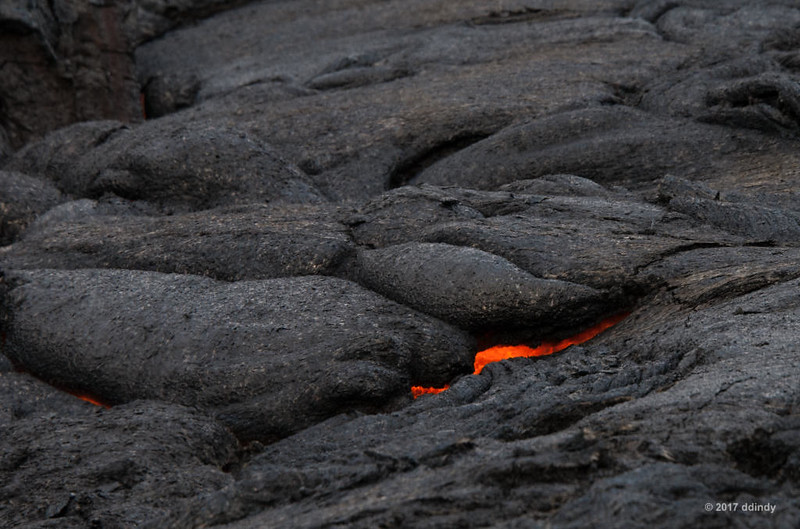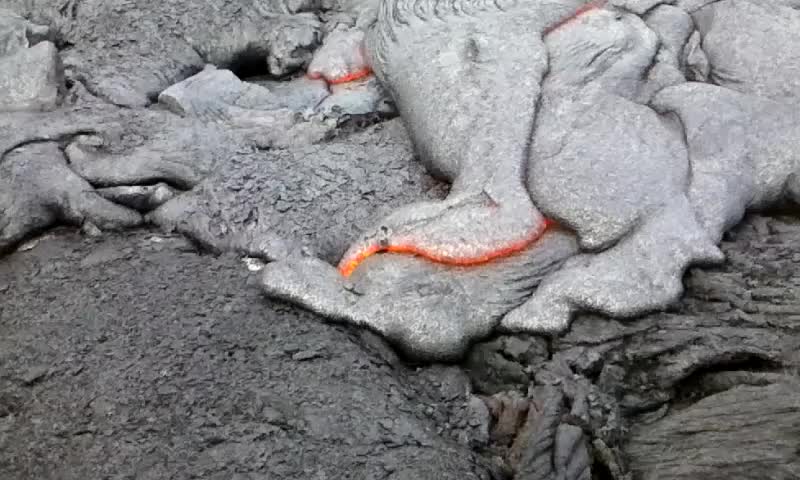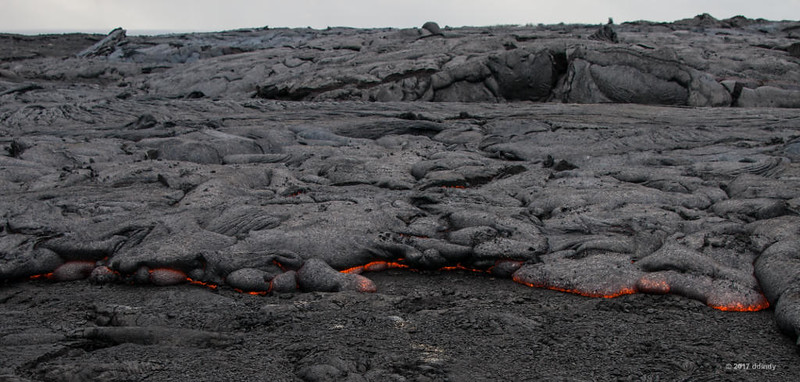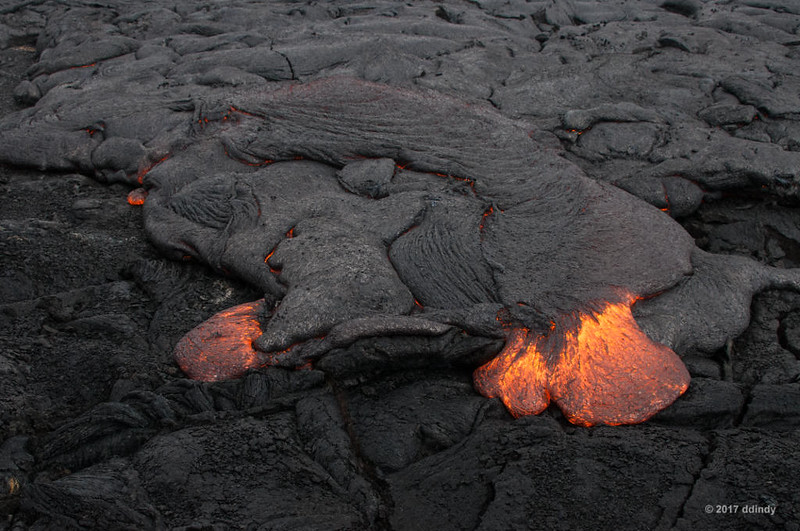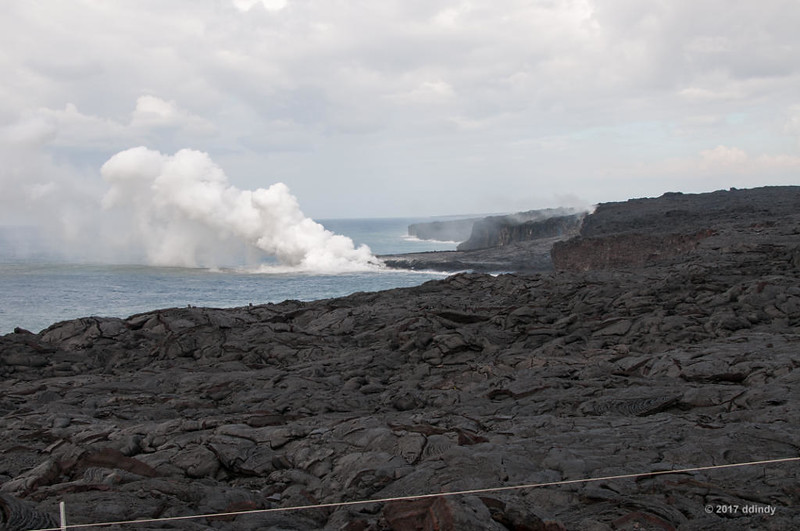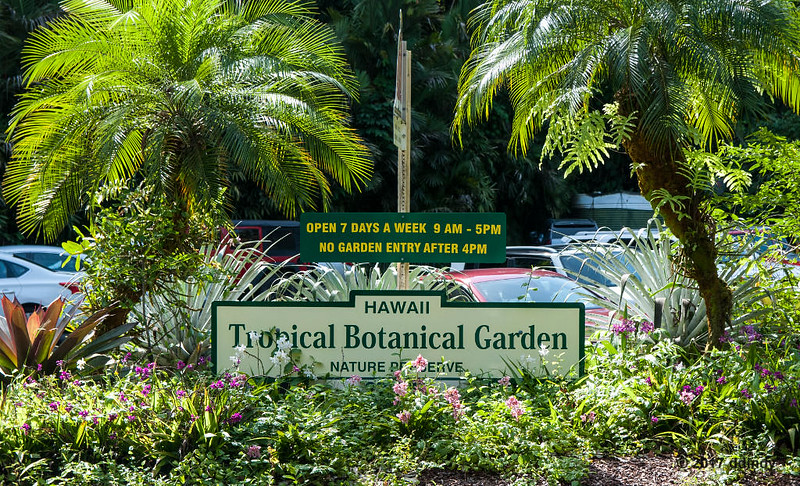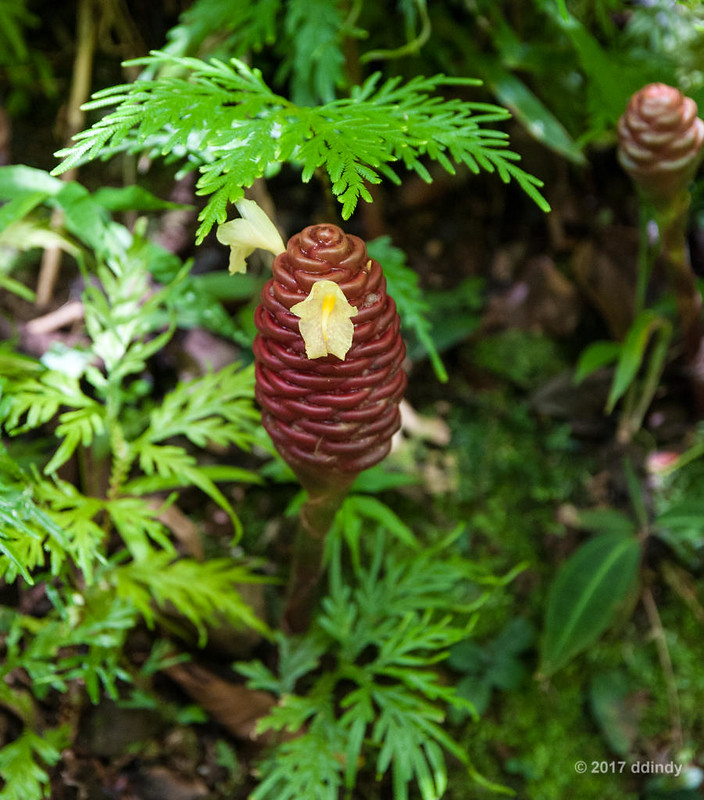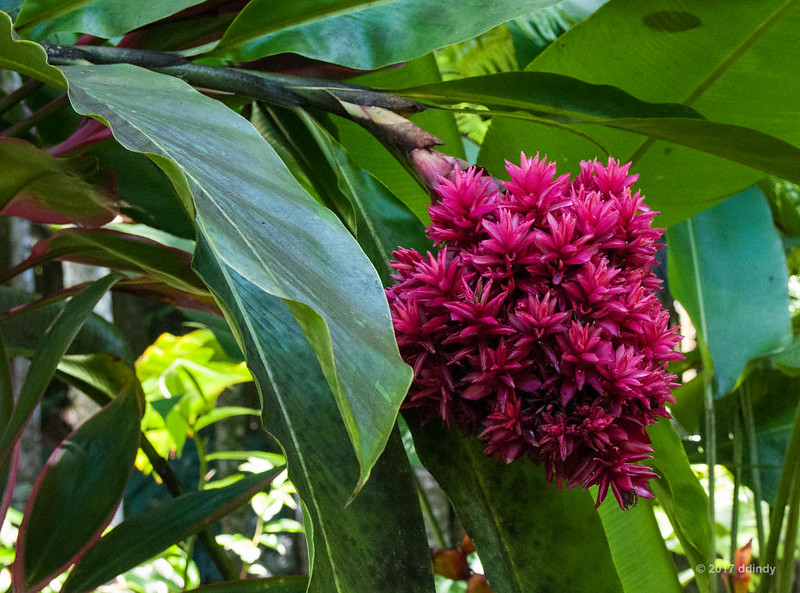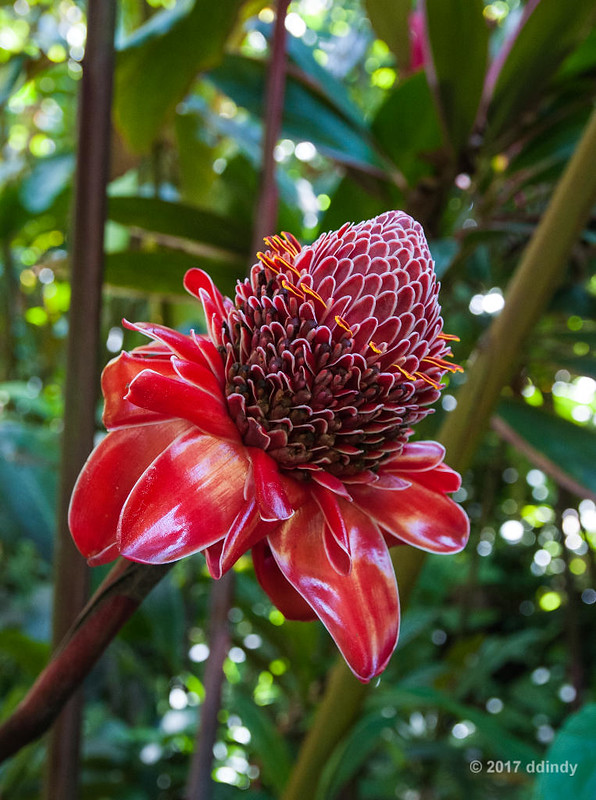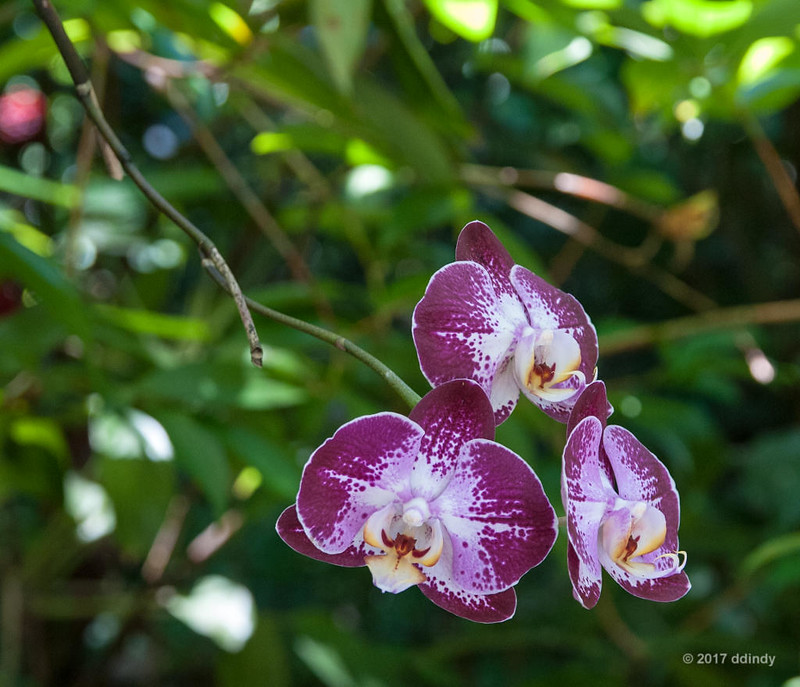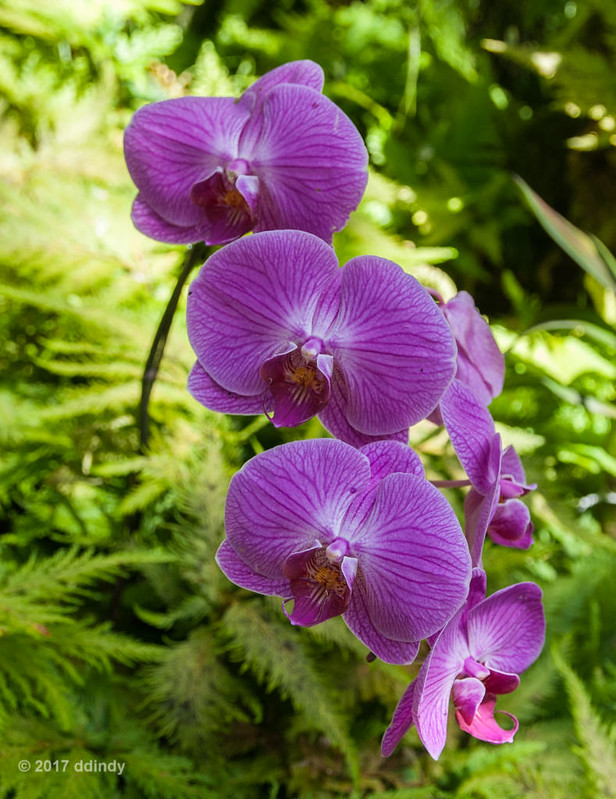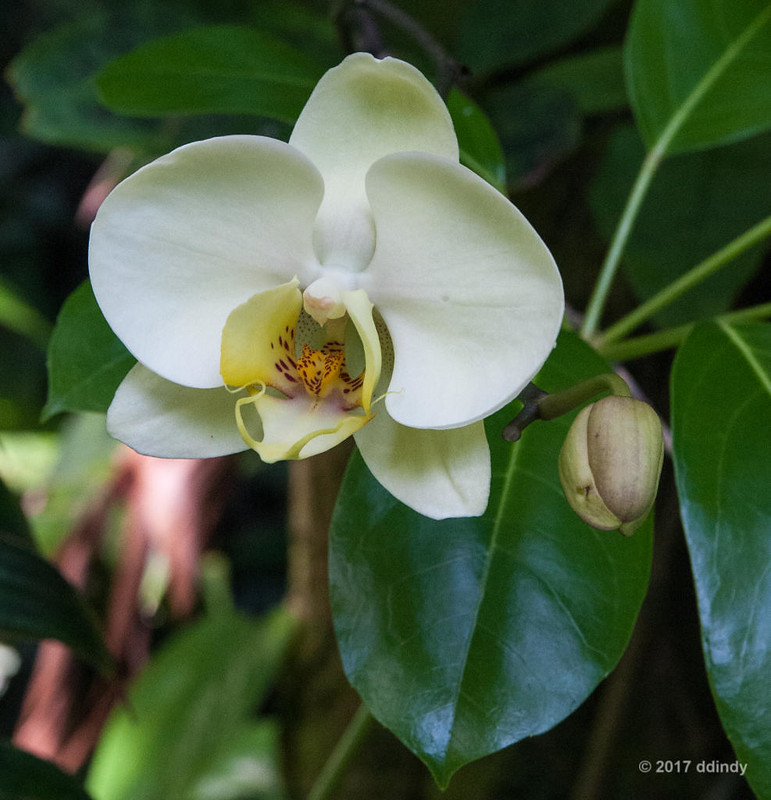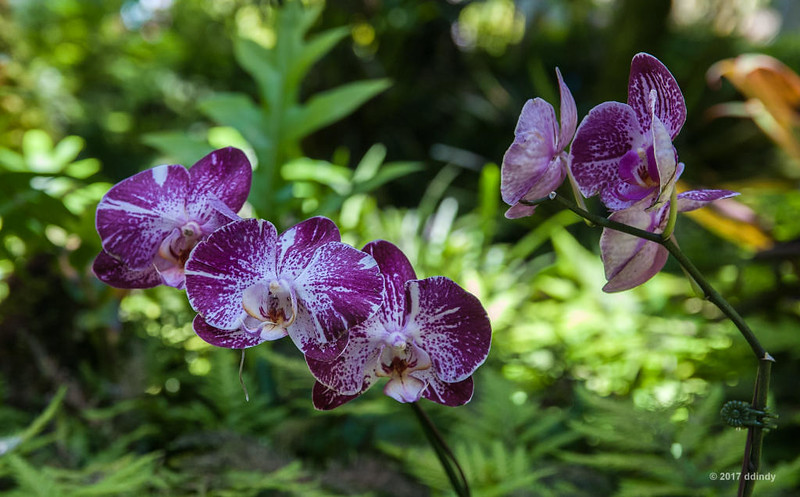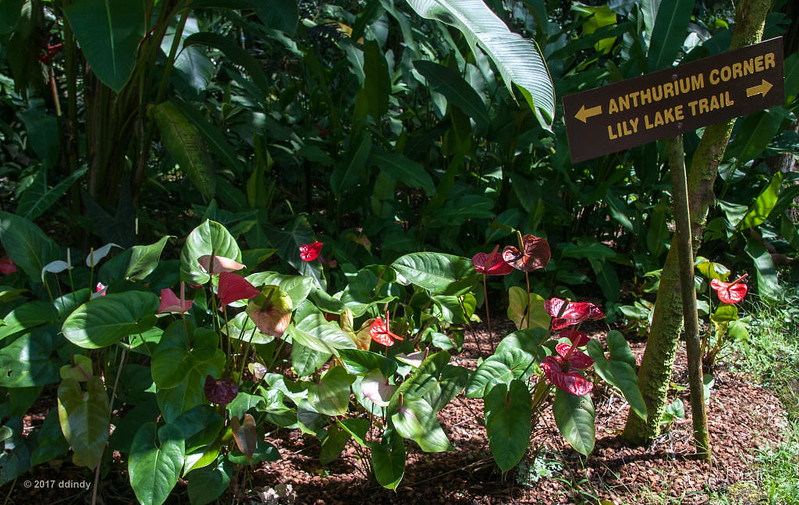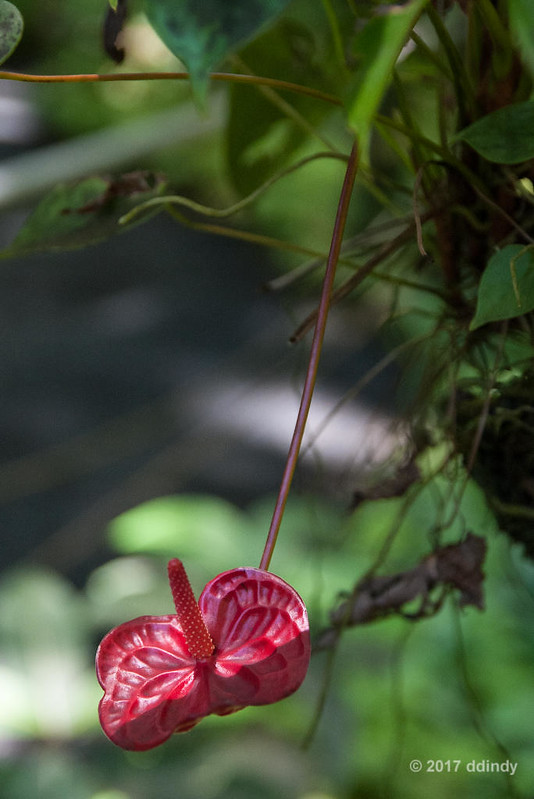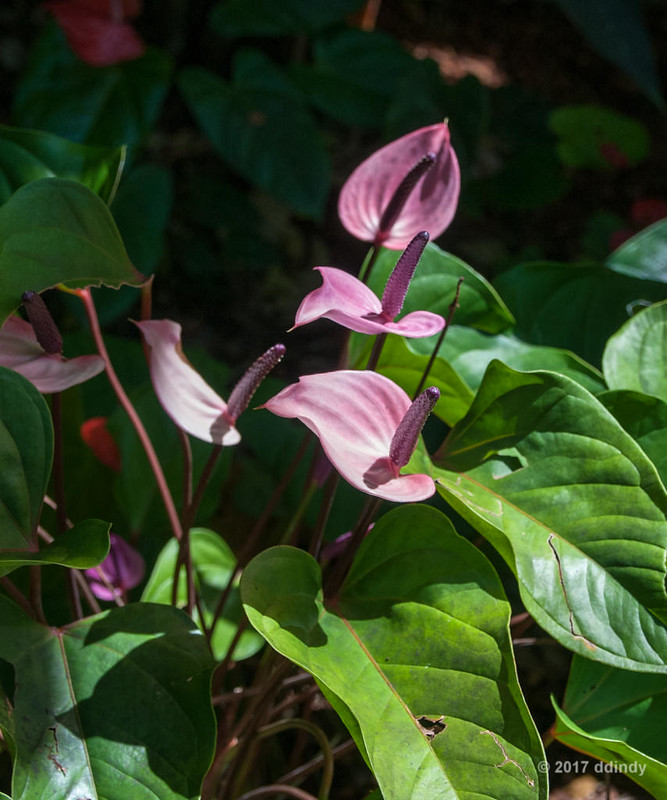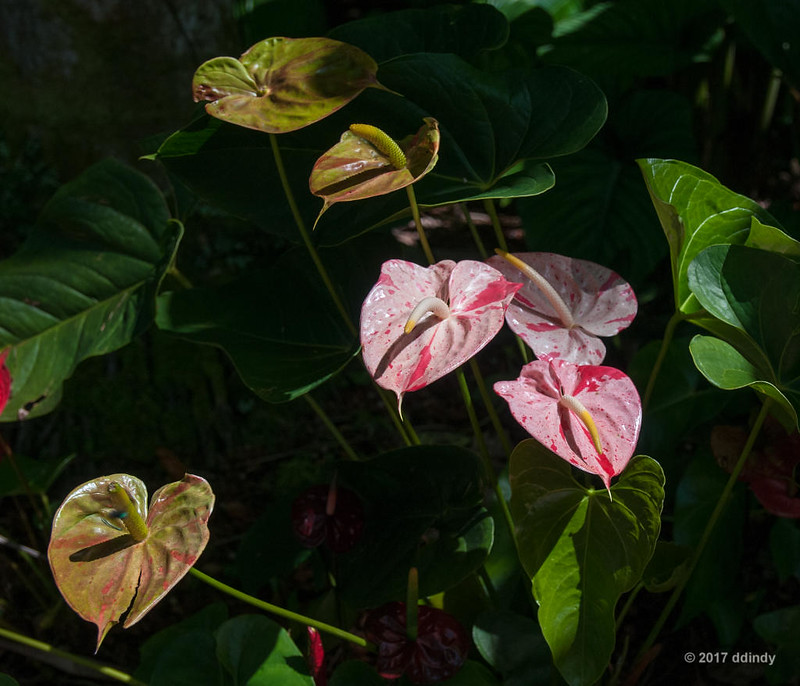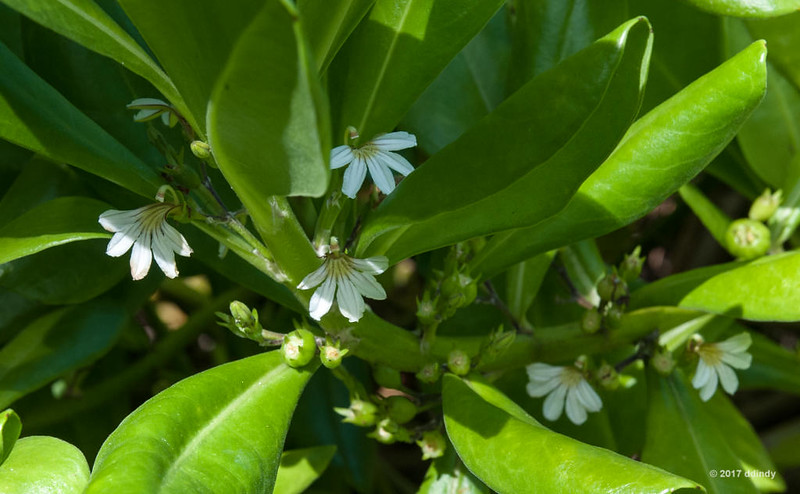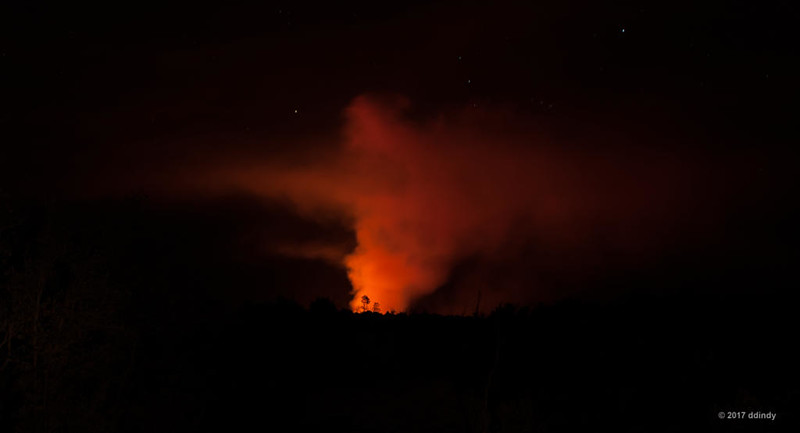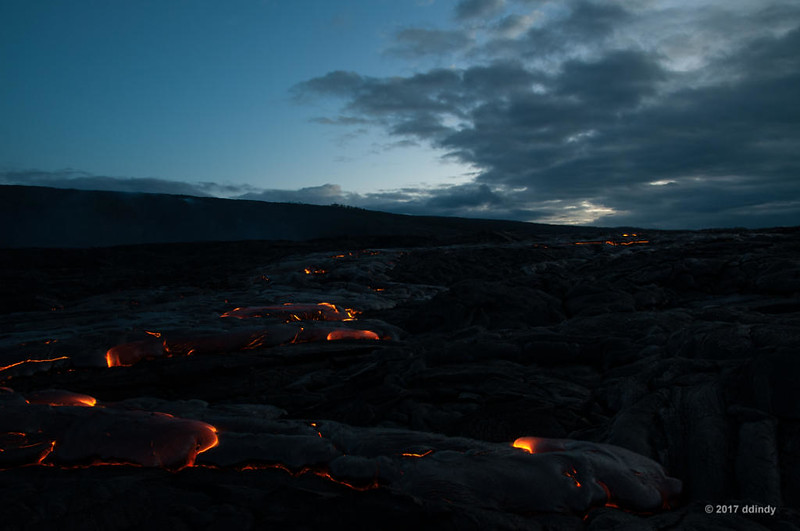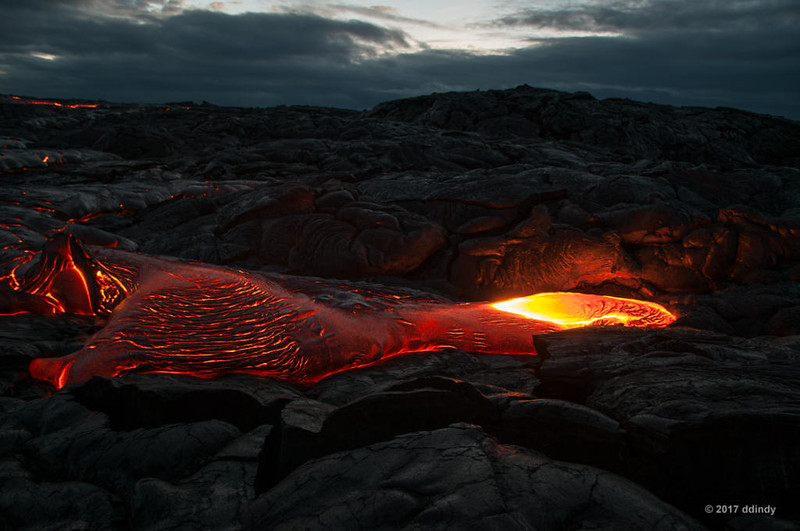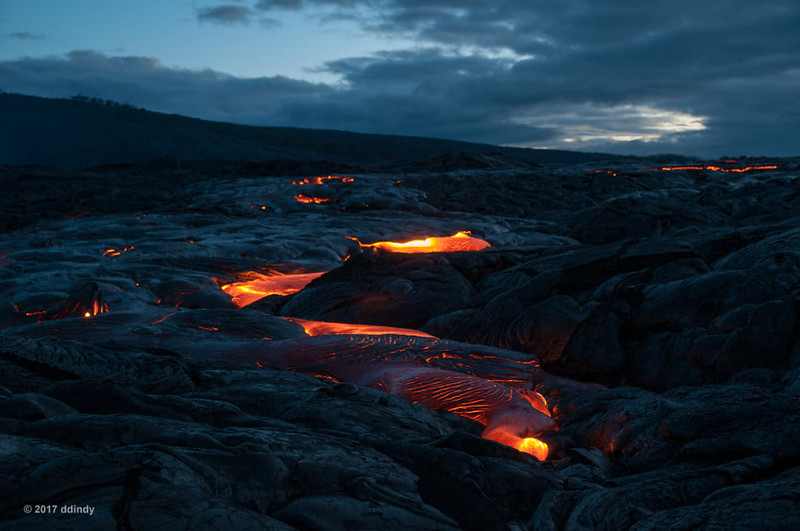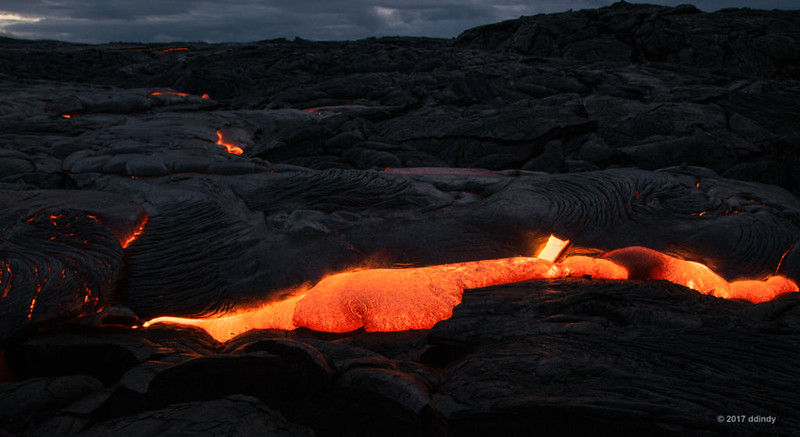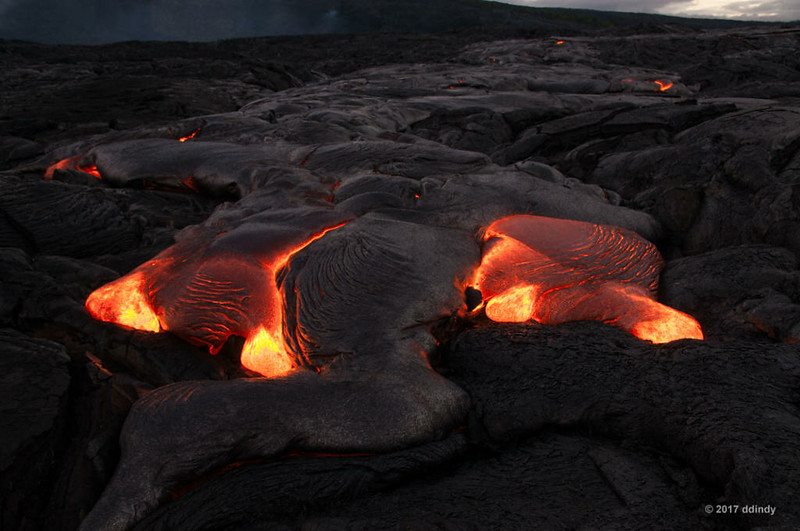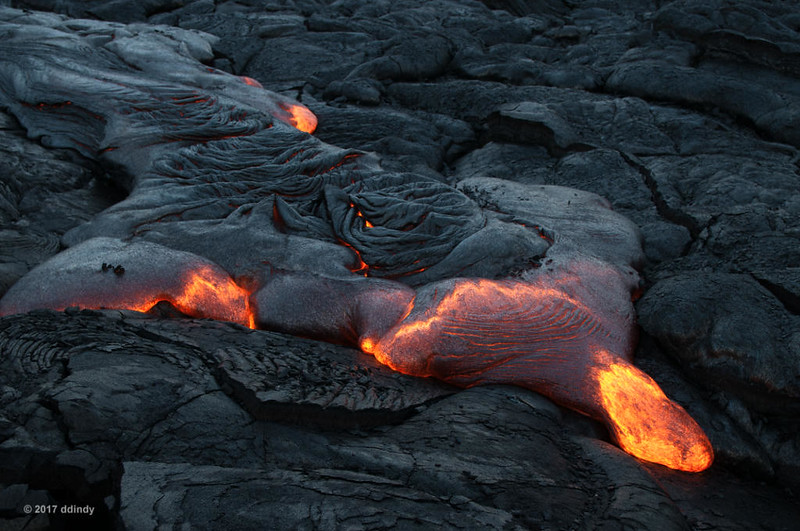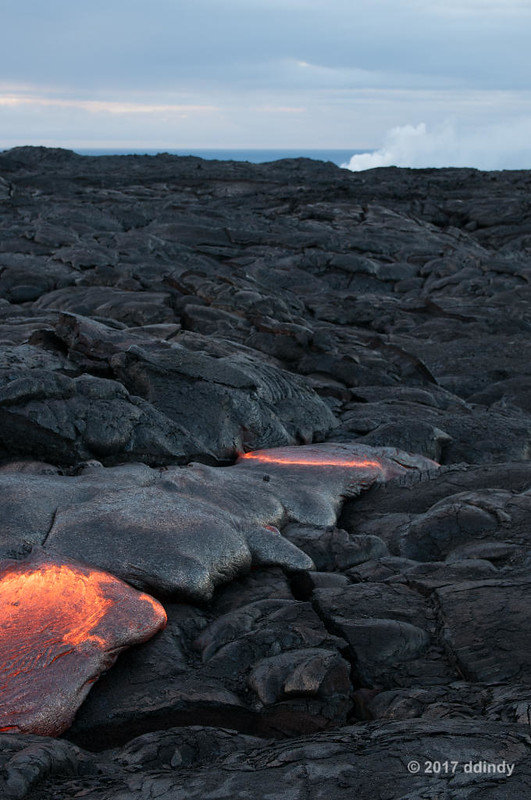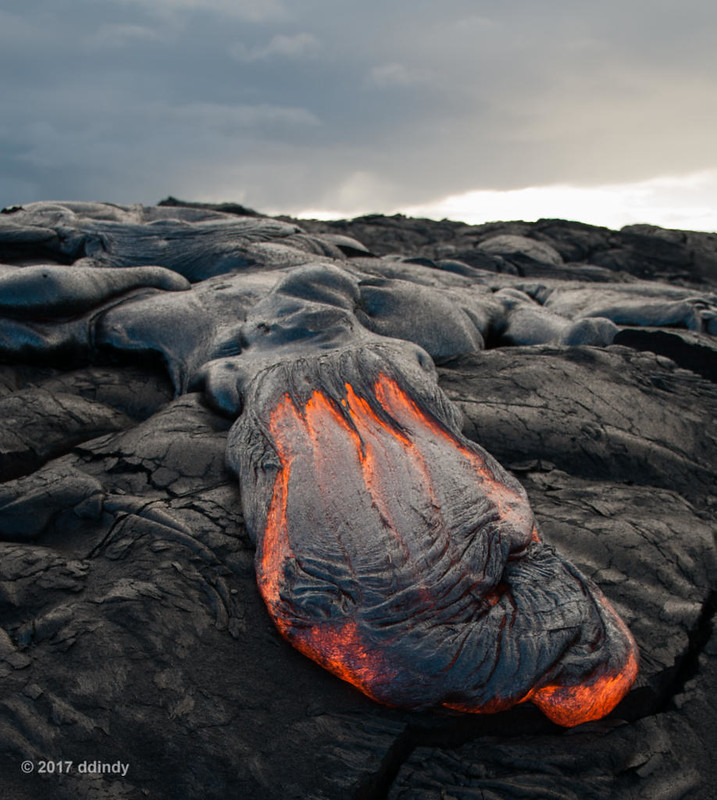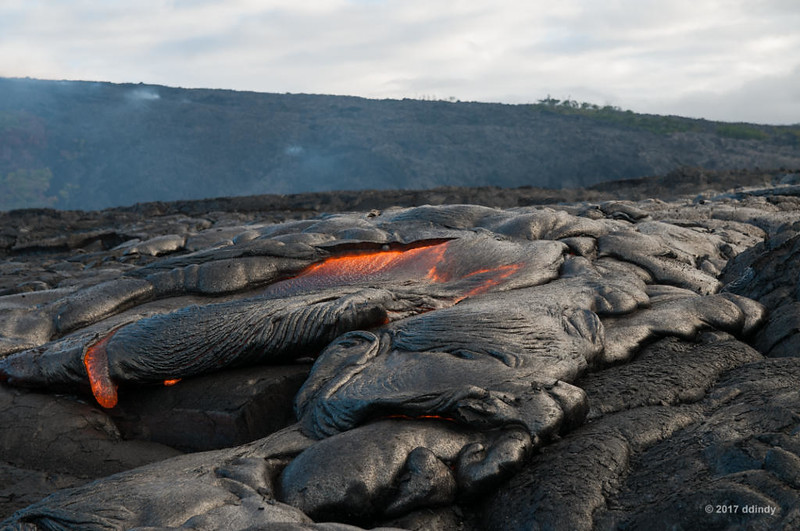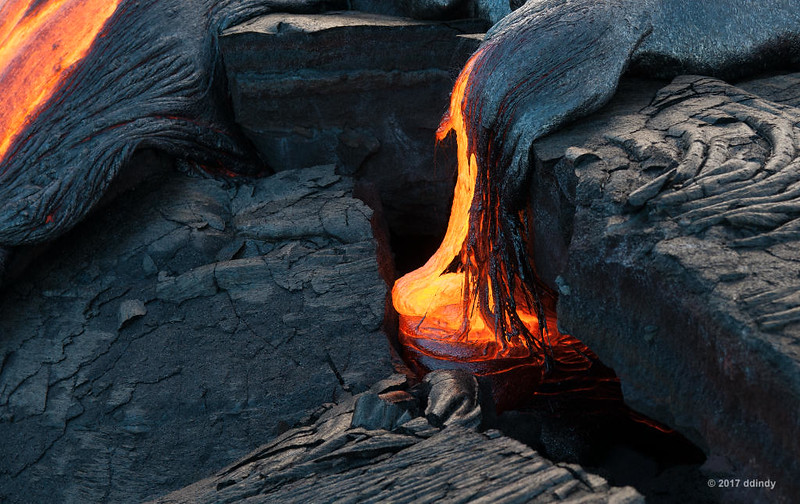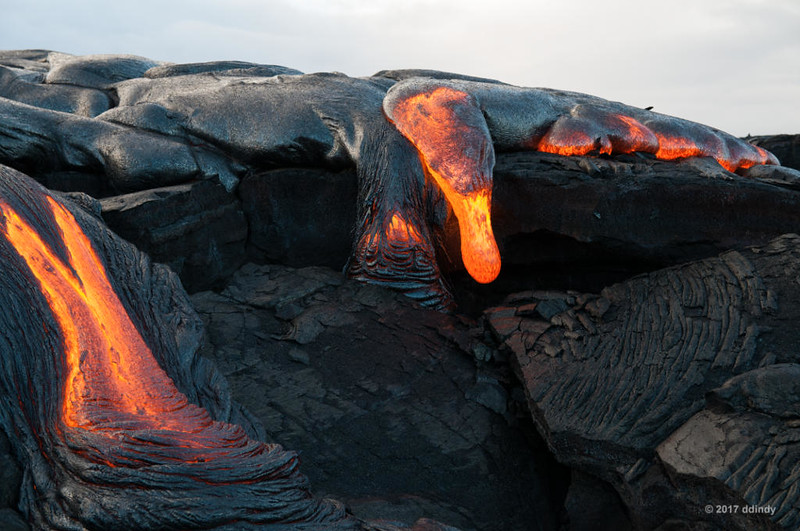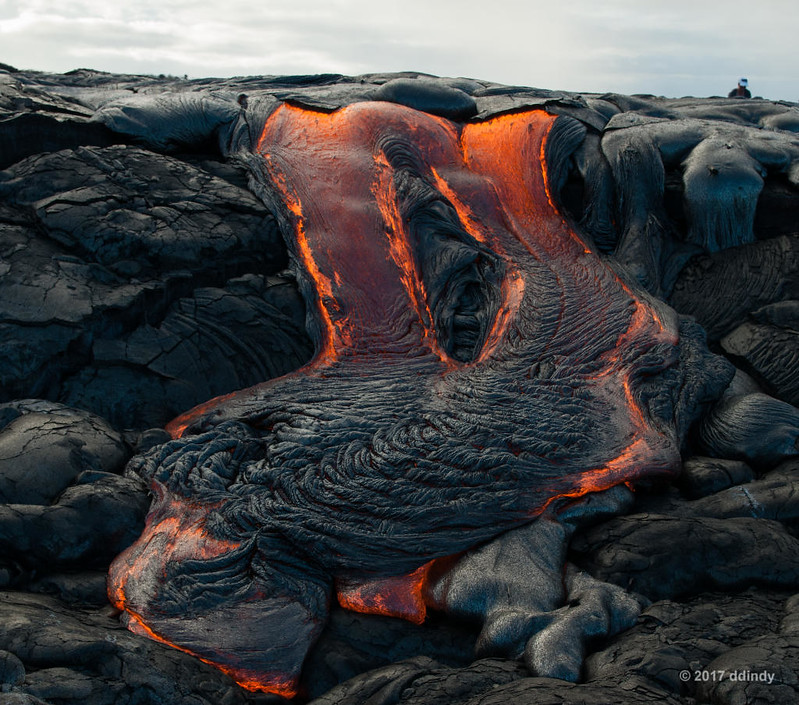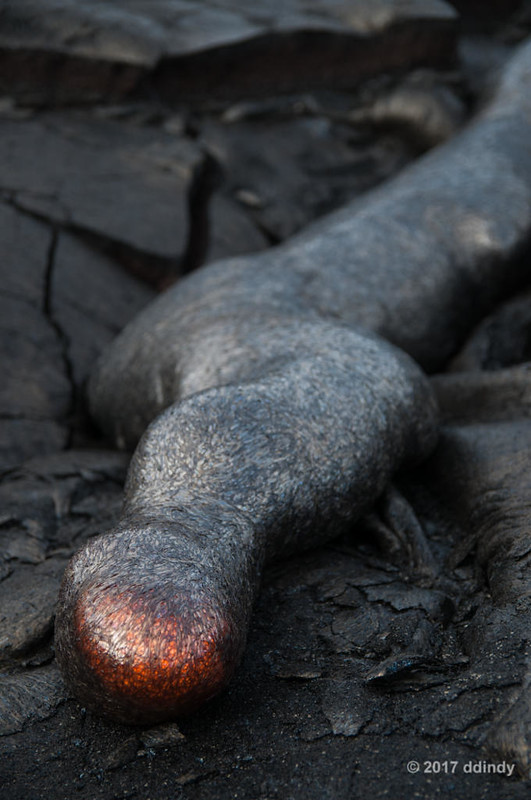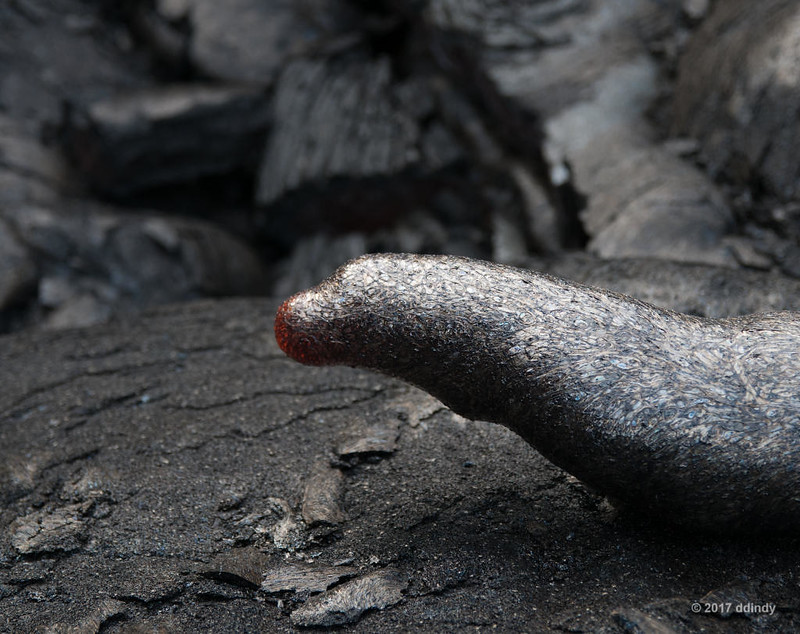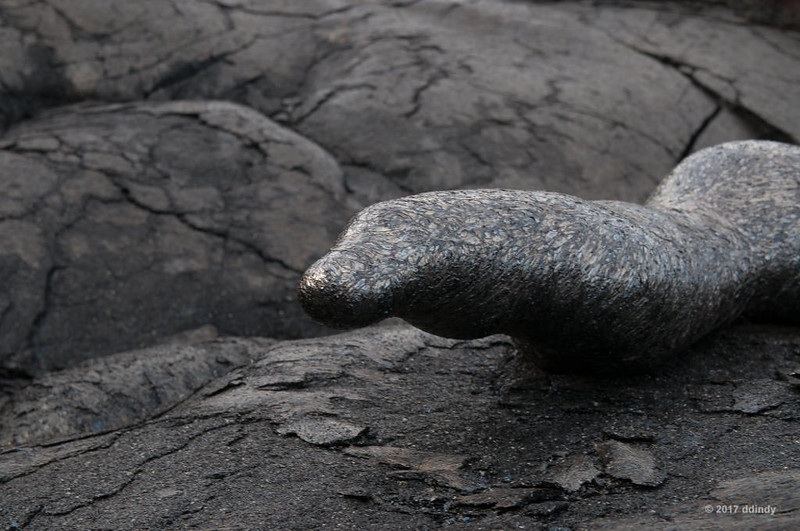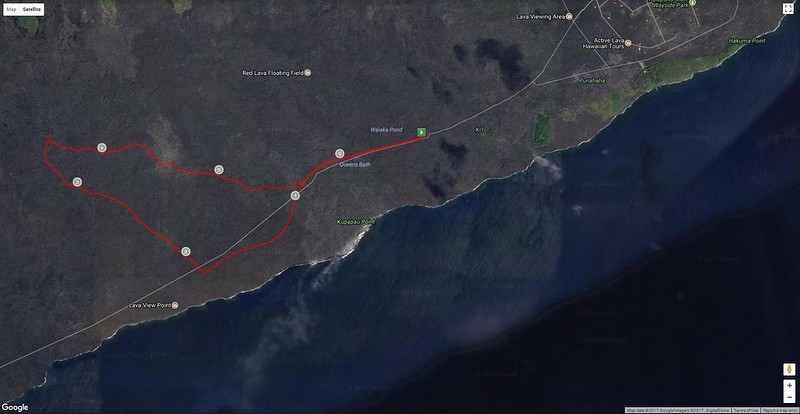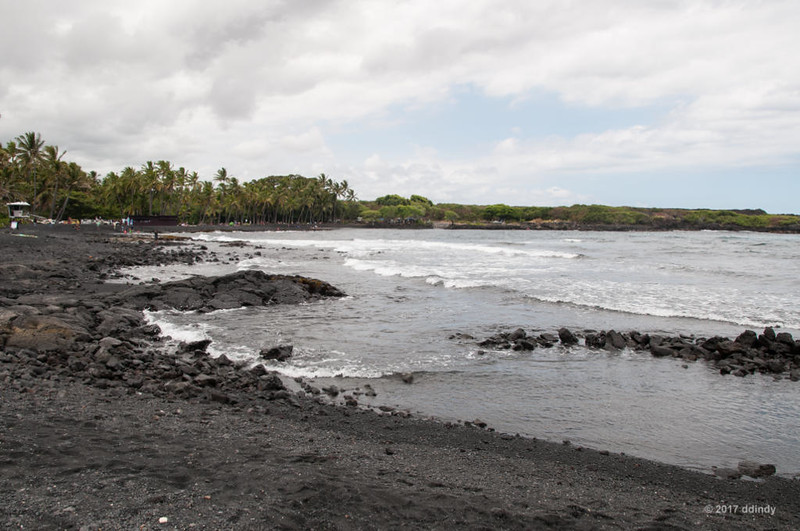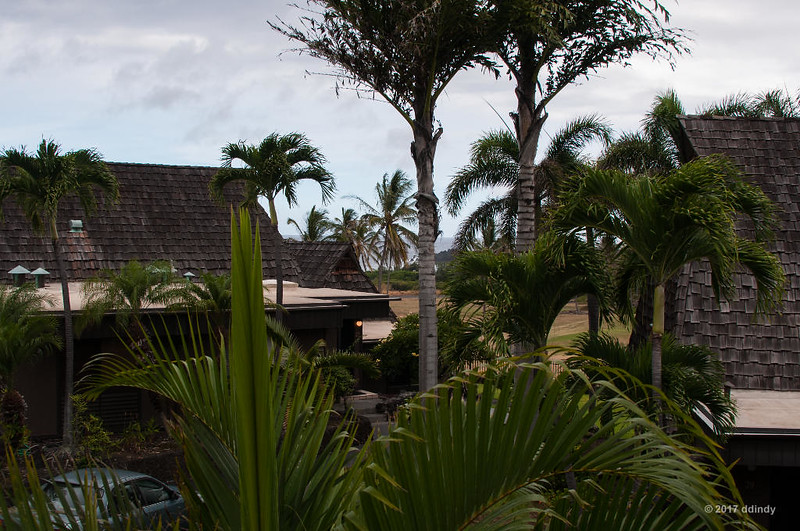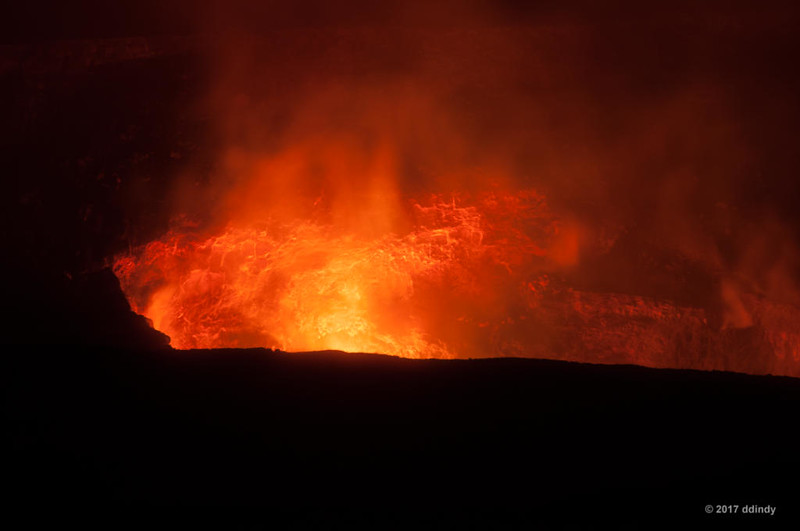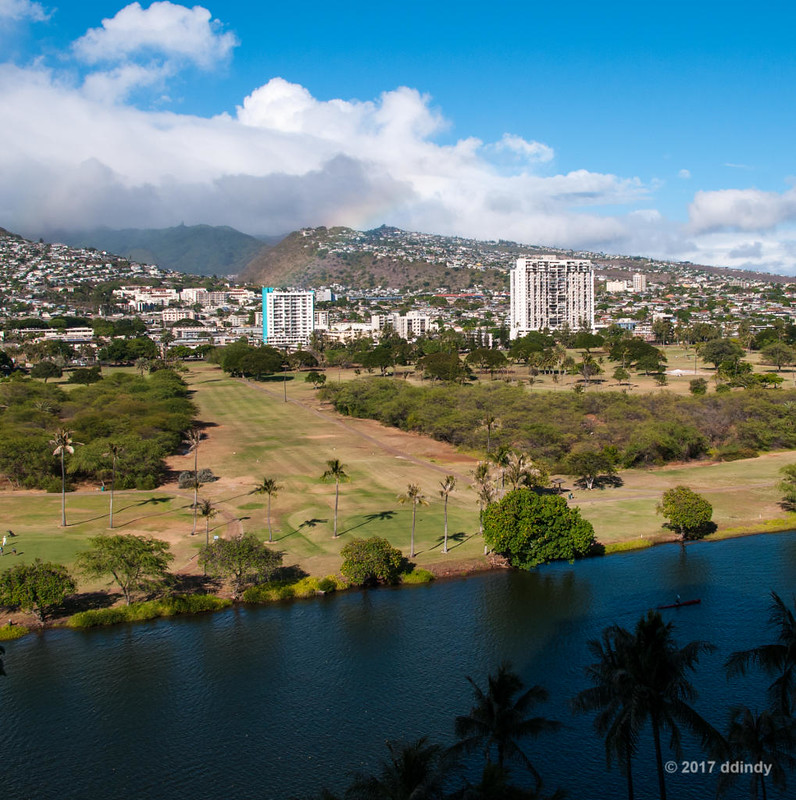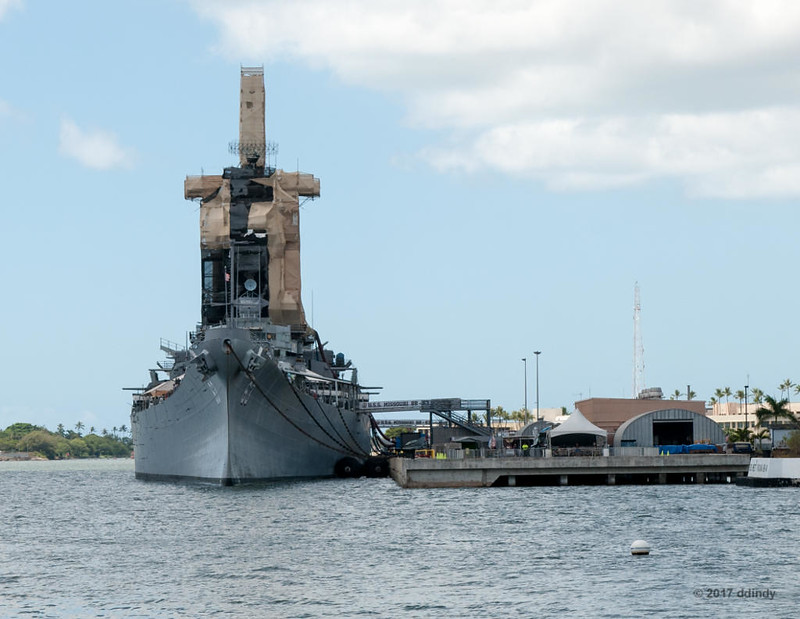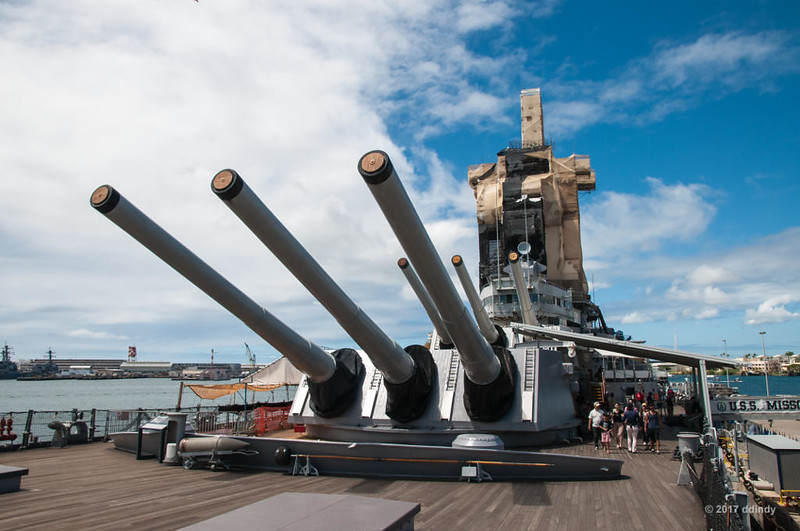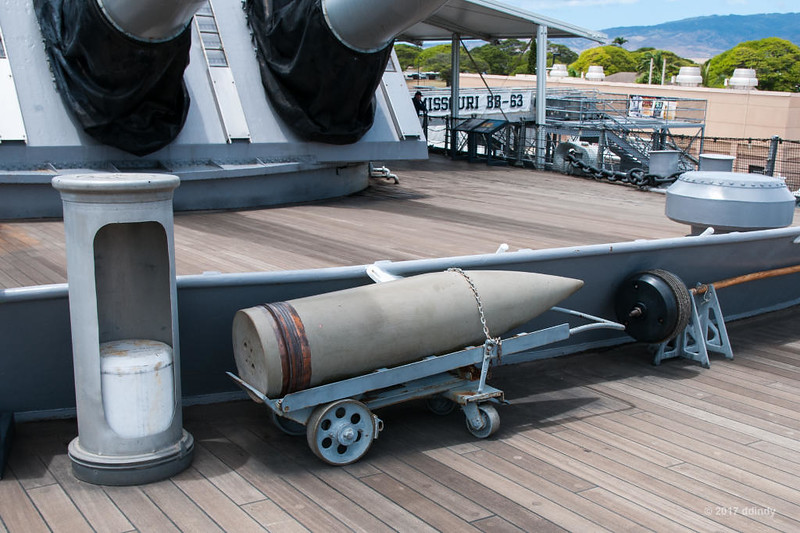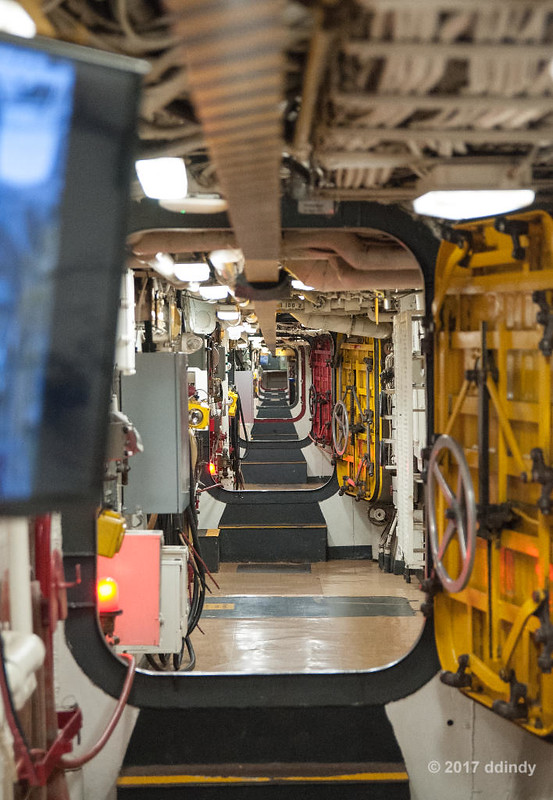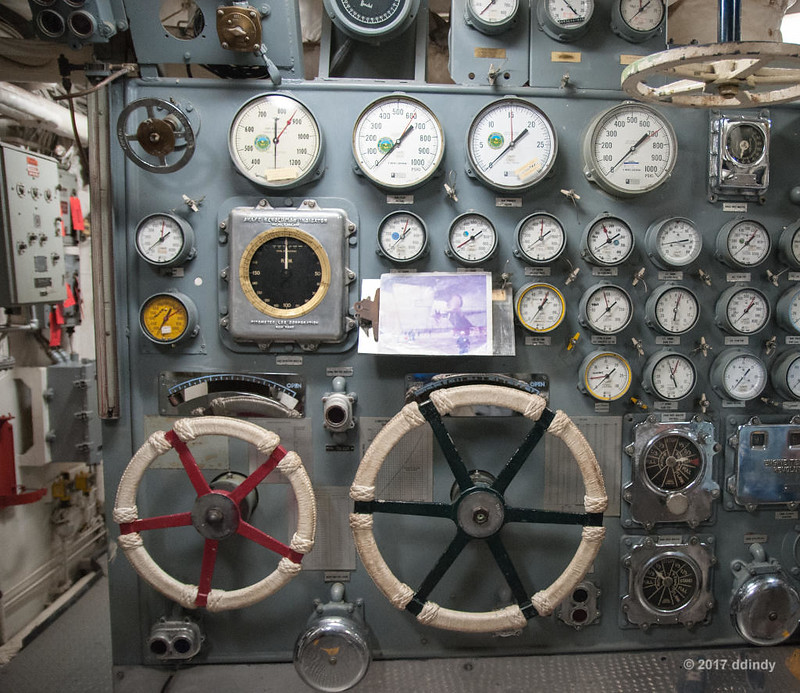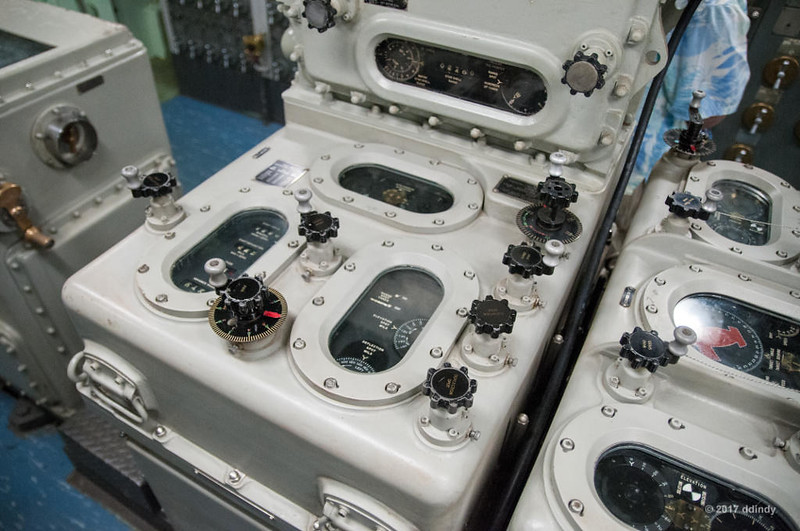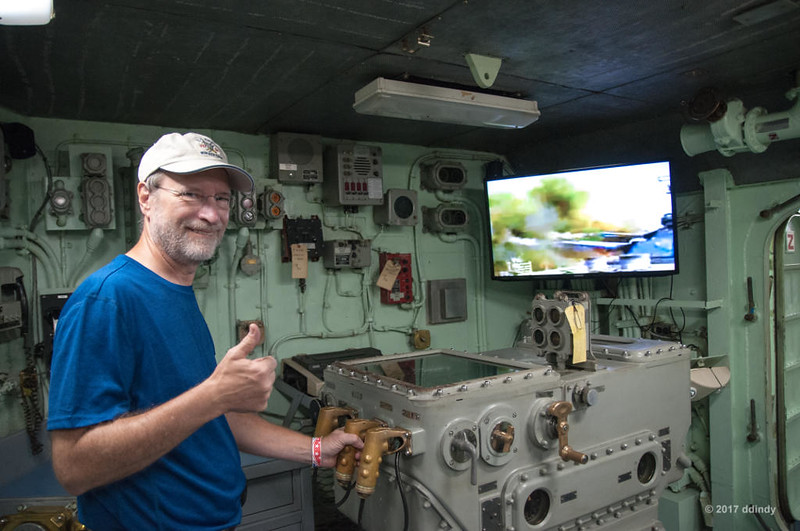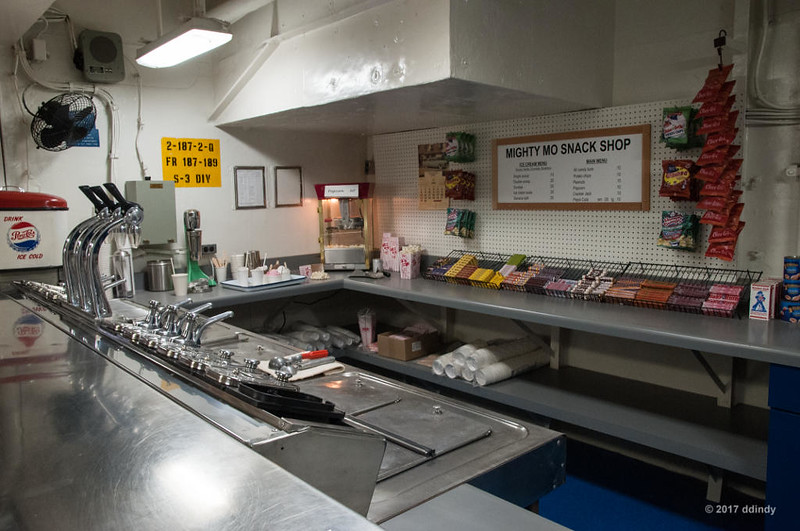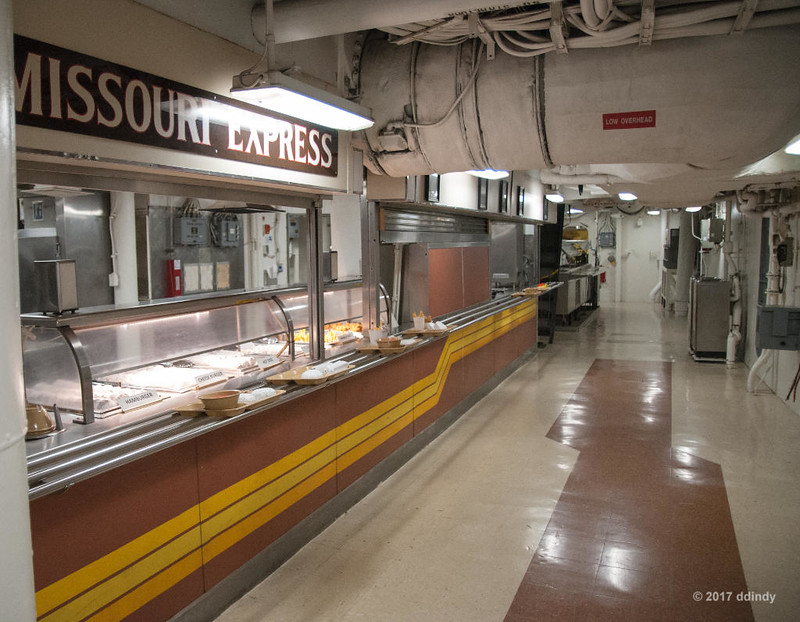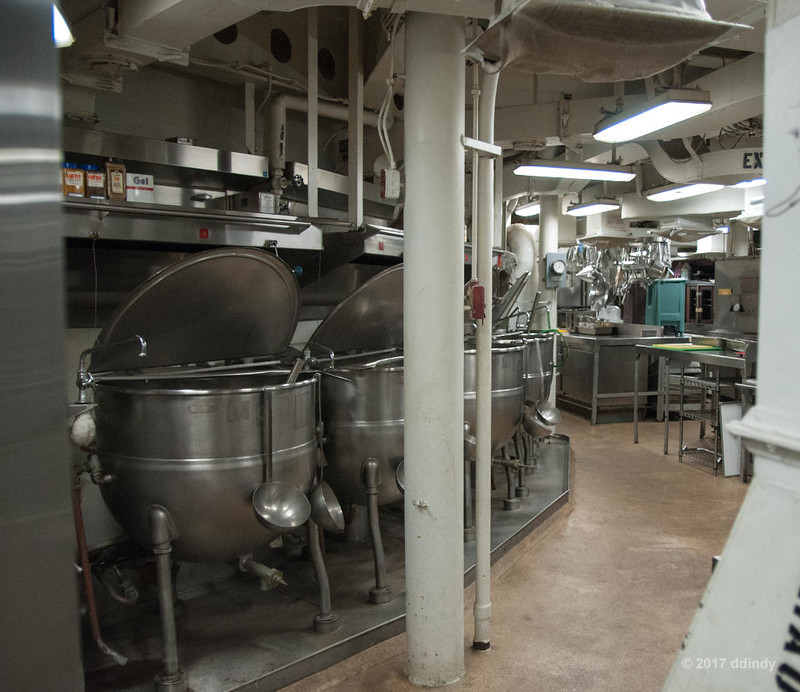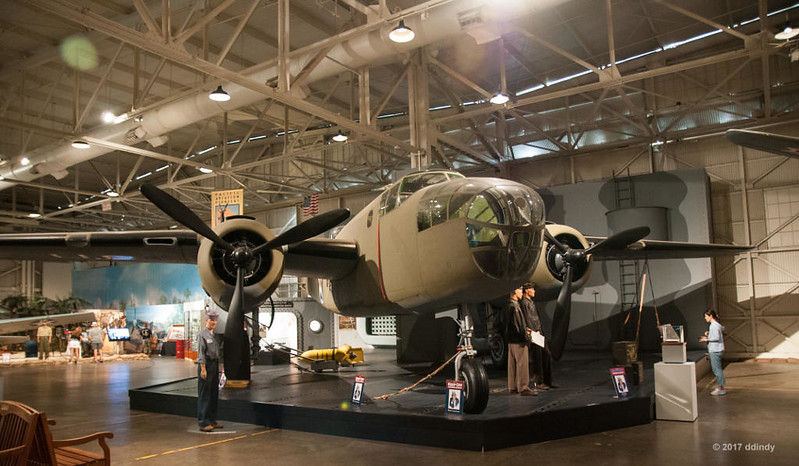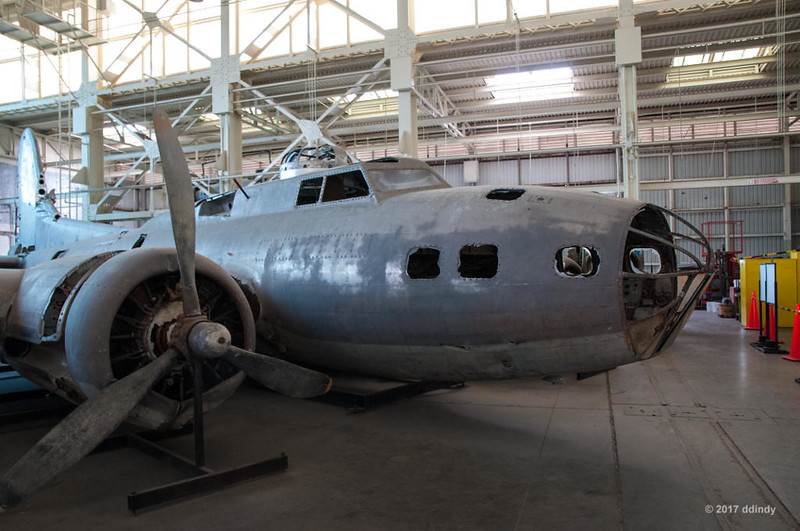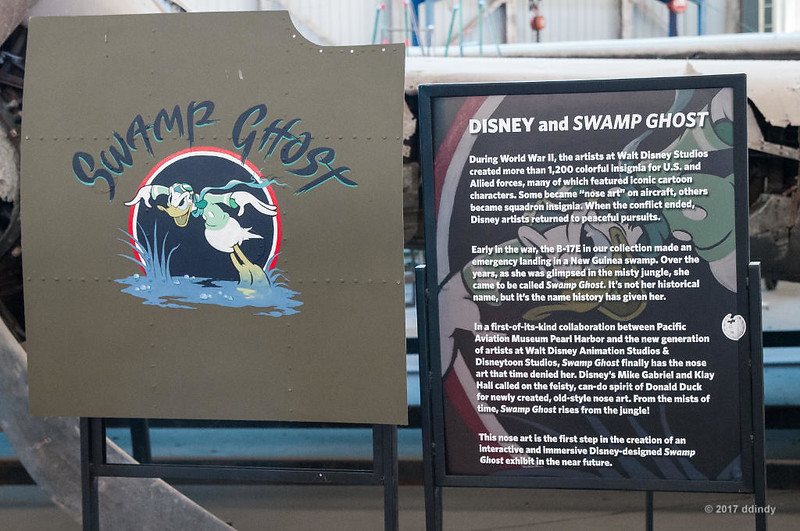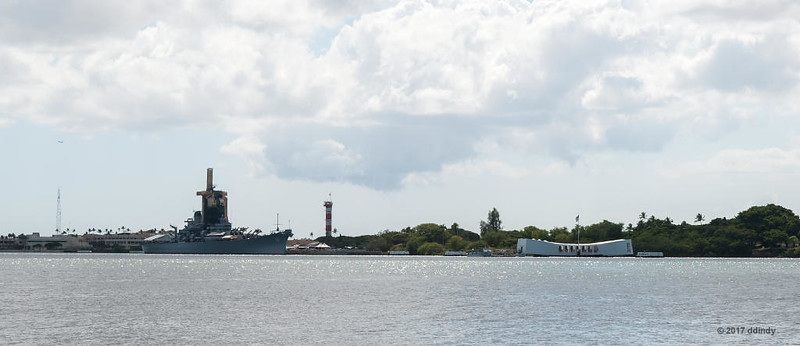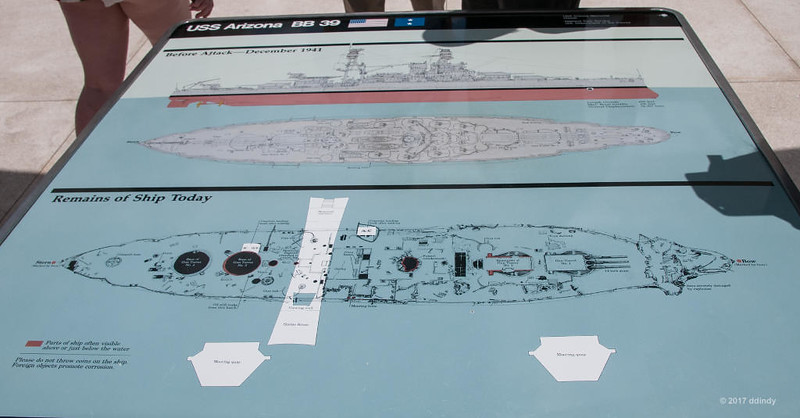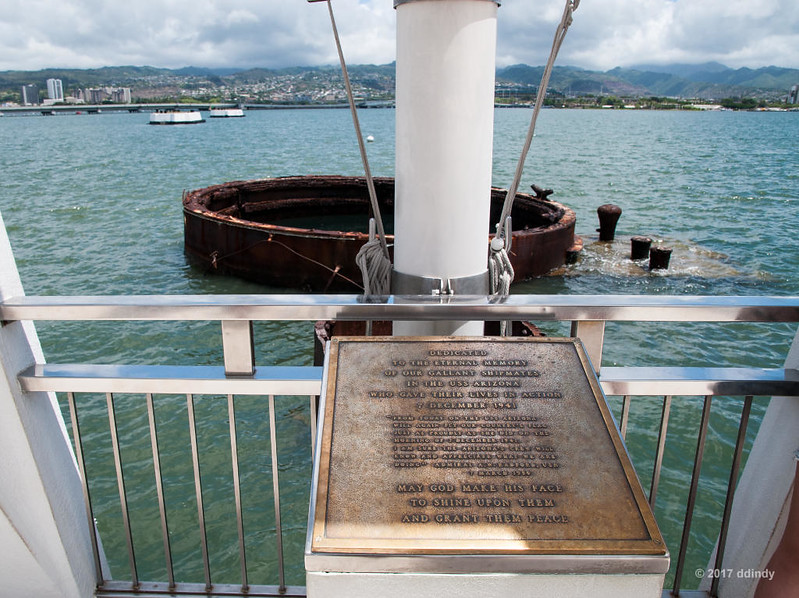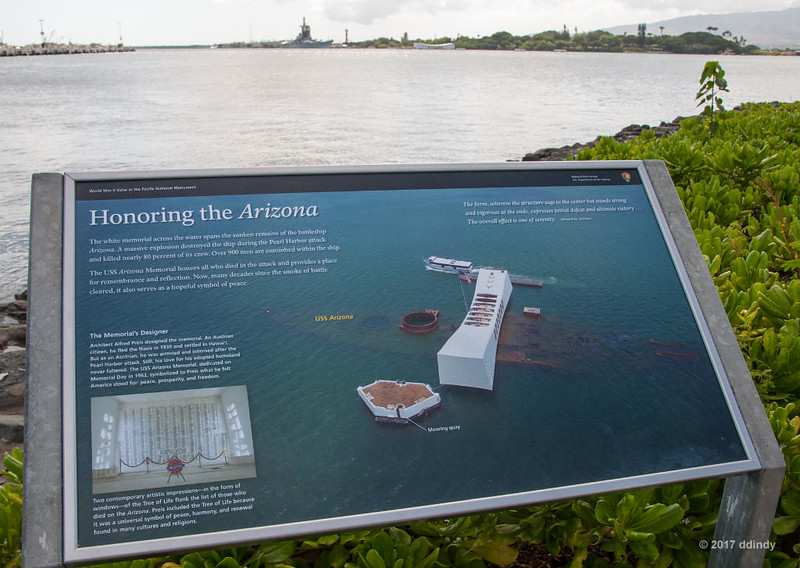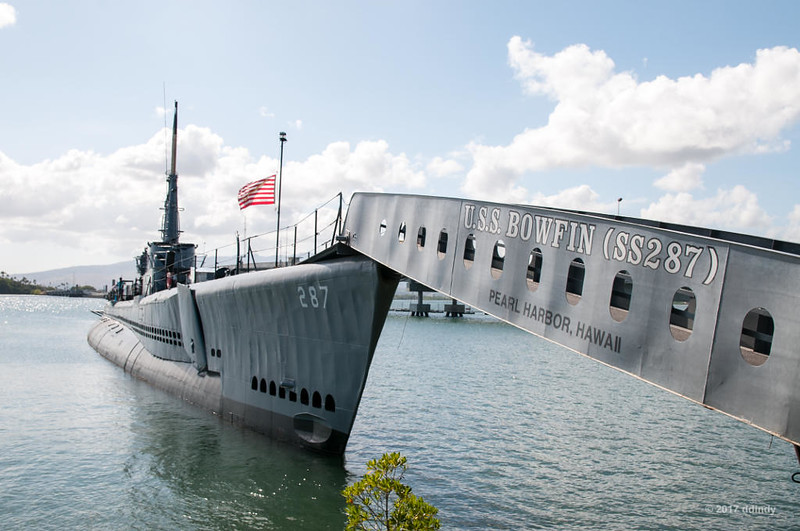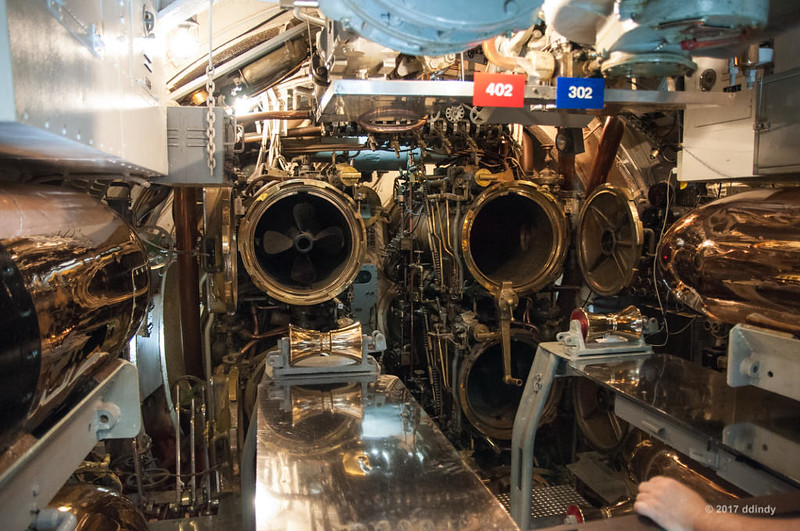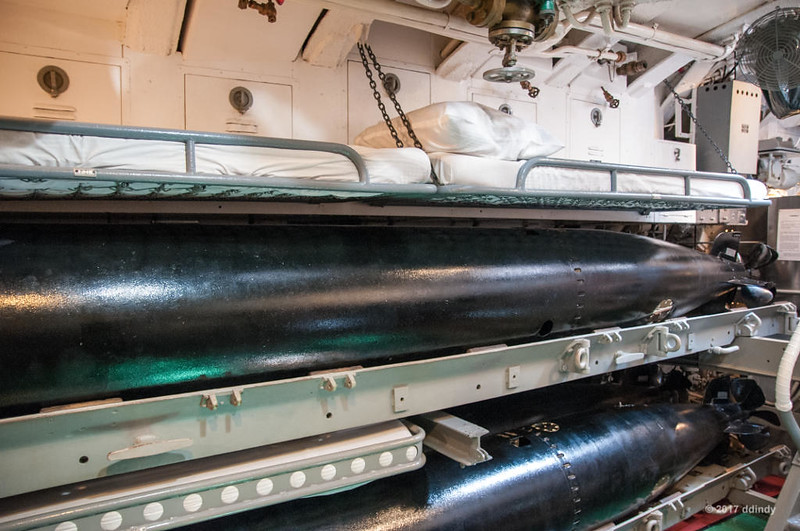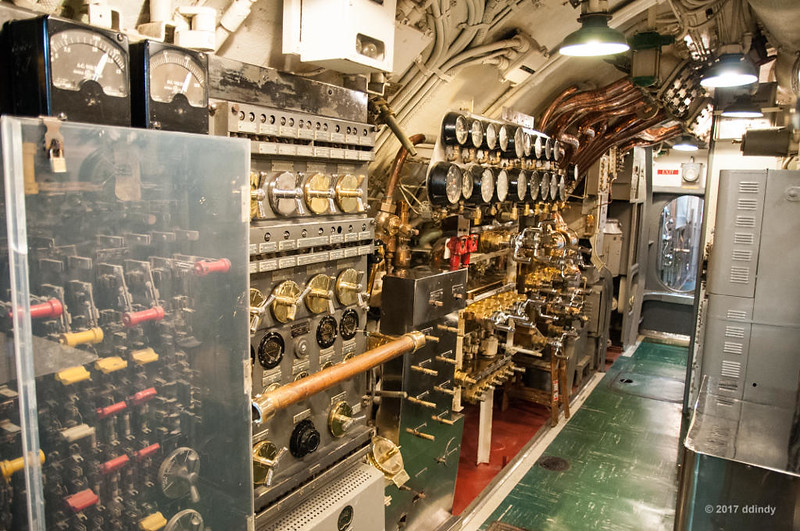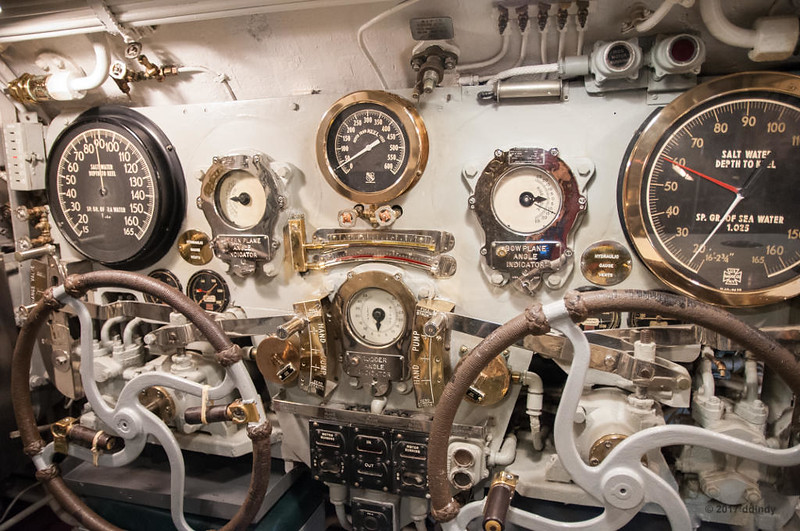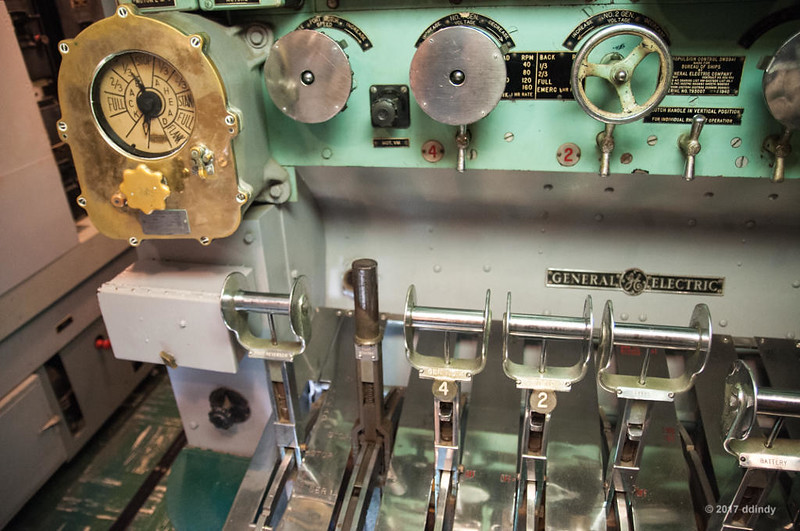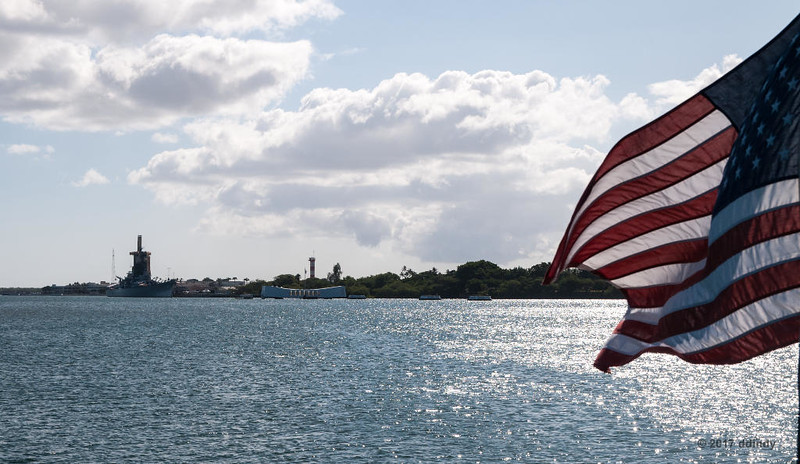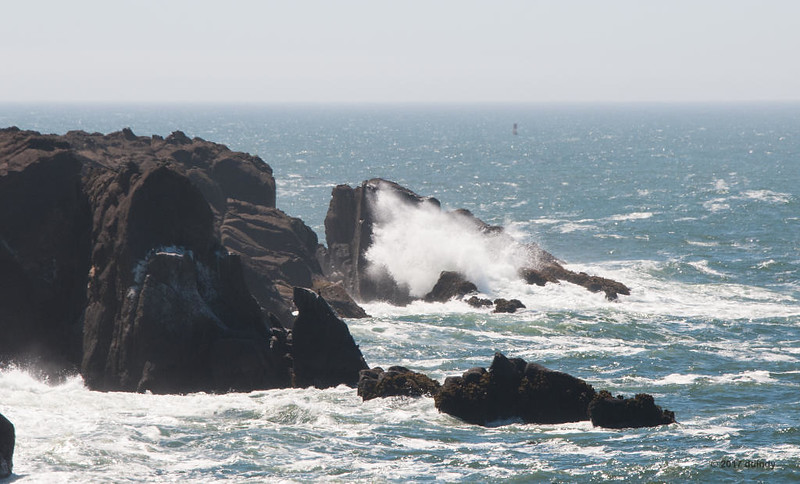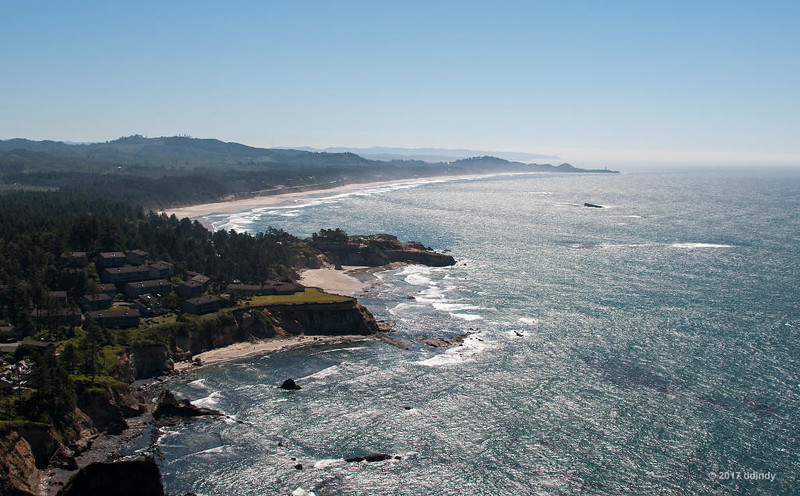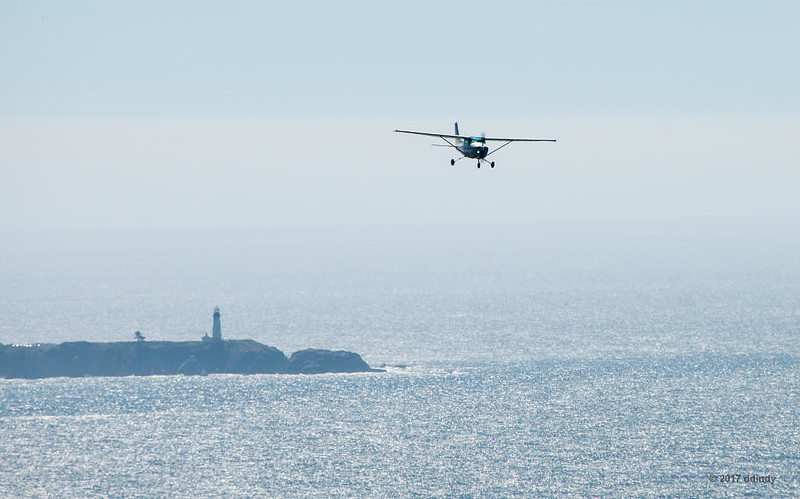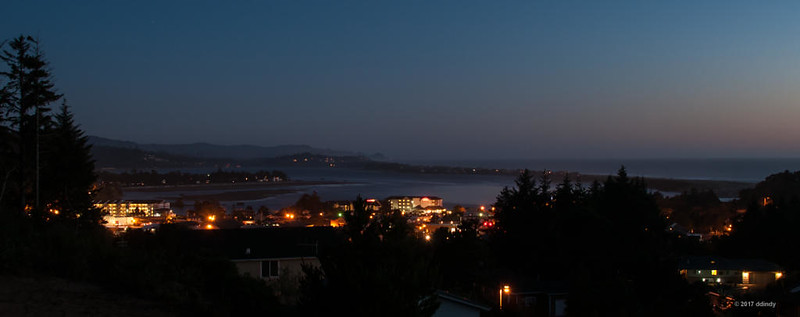Trip report part 6
Things Get Hot!
We're up to Friday, August 25, 2017. We had booked an early-morning lava hike with Epic Lava. That meant getting up at 2 am and driving for an hour to the town of Kea'au where we were to meet our guide at 4 am. On the way, we passed near Kilauea where the red glow from Halema'uma'u crater was clearly visible. I wanted to stop for a photo, but decided it would be better to wait until later in the trip.
Our guide, Yvonne Baur, met us at the designated location. Yvonne is originally from Germany and spent many years in Utah before moving to Hawai'i. She's also quite a good photographer. (More on that in part 8.) We were the only people on the morning tour, which meant we would get all of the attention. We followed Yvonne on the 30-minute drive to Kalapana, where the public road ends and the emergency access road begins. Kalapana was covered by lava in 1990. In the wake of that, there is a parking area and many temporary bicycle rental businesses (for people who don't want to hike to the end of the access road). As we neared the town, we could see what looked like street lights on top of a hill. But those weren't street lights. What we were seeing was lava pouring over the edge of Pulama pali. (Pali is the Hawai'ian word for a steep slope or cliff.) I took that as a good sign.
We parked our car in the Kalapana parking area (really just a wide spot in the road) and transferred to Yvonne's car to drive another mile up the road. The tour company pays a homeowner a small fee to park at the end of their driveway, a much-appreciated saving of two miles of hiking.
The tour company provides all hikers with a small backpack with water, snacks, gloves, a rain poncho and a flashlight. The gloves were for protection in case of a fall in the lava field. Lava can be sharp, thanks to a high silica content, so a fall could be mean a painful hike back. On this day I made a few slips, but fortunately no falls.
We started the hike around 5 am. Why hike in the morning? The lava field is basically a black surface. Imagine an asphalt parking lot on a sunny day. Would you rather walk on that in the morning, before the sun heats it up, or in the afternoon, after it has been baking in the sun all day? That's why a morning hike is better. Plus, if you do it soon after arriving in Hawai'i, your body hasn't had a chance to shift to Hawai'ian time. In the summer, Hawai'i is six hours behind Eastern time. (It's only five hours different in the winter, since Hawai'i does not observe Daylight Saving Time.) I kept telling myself that even though it's 5 am in Hawai'i, it's 11 am back home. It didn't help.
Enough trivia. We hiked two miles along the gravel access road in the dark. For the first half mile, we were instructed to stay quiet, as we were passing several houses and we didn't want to disturb the residents. On the return hike, in daylight, we saw that the "houses" were several very small (one might even say tiny) buildings sitting on the lava. Not anything like what I had imagined in the dark. It's probably the perfect place for someone who wants to get away from it all.
Along the way we passed a couple of locked gates that prevent people from driving down the road. Hikers and bicycles are free to pass. The second gate marked the entrance to Volcano National Park, and is the site of the only comfort facilities (porta-potties) on the hike.
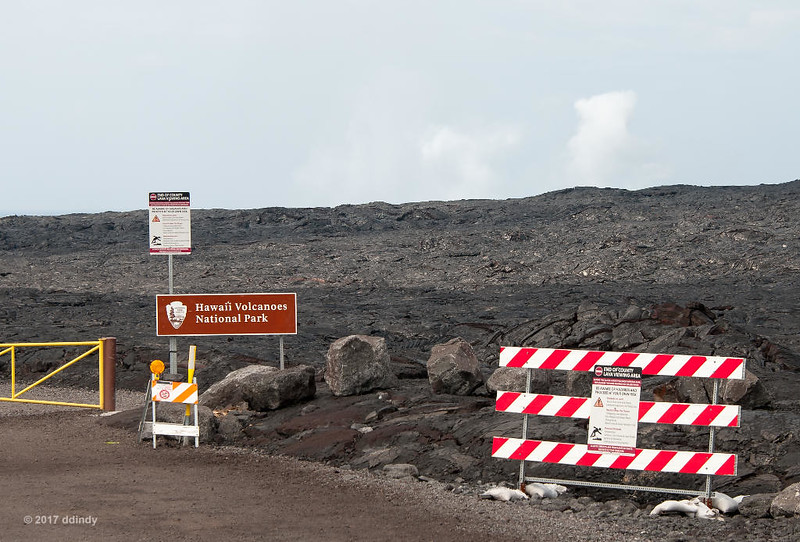
Park Back Entrance
After two miles we reached the "end" of the gravel road. It was blocked at this point due to the current path of the 61G flow from Pu'u O'o to the ocean. At this point, my sister, who had a cataract in one eye that greatly hampered her depth perception, realized that hiking over the lava was going to be difficult, if not impossible. She reluctantly decided to stay put while Yvonne and I headed off in search of lava. Fortunately, it was going to be a cloudy day, so she wouldn't have to worry about the heat.
We turned inland and hiked across the lava field for another two miles. Thanks to many layers of lava over the past 35 years, the hike is far from easy. There's as much up-and-down as there is horizontal progress.
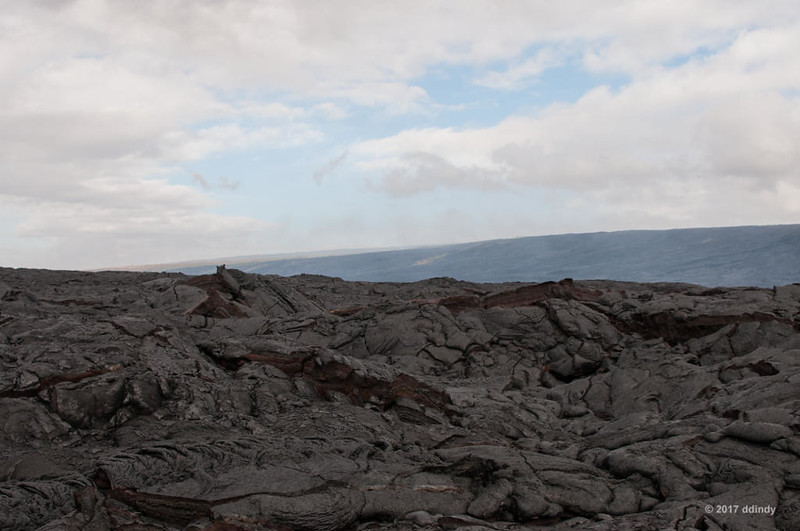
Challenging Terrain
I could see Pulama pali in the near distance with several plumes of smoke indicating lava movement.

Smoke on the Pali
Surprisingly, there were a few areas which had still not been covered with lava.

Surviving Pele
Eventually, I started to feel some heat coming up from the ground. I asked "Is it just me or is it getting warmer?" Sure enough, as we crested the next hill, there it was: actual hot, glowing, moving lava.

Lava Hike 1, 6:45 am
Yvonne uses her phone to make time-lapse videos of the lava. Since she sets it up so close, the video ends when the phone overheats and shuts down. She has to take it away to cool off before shooting another.

Lava Hike 1, 6:44 am
The terrain in the area was relatively flat, so the lava moved very slowly. Actually, ooze is probably the correct word to describe the motion. There was no threat of being overrun by onrushing lava. It was relatively quiet, but the hot lava made a sort of sizzling sound, like meat cooking on a grill. (Click the photo below to view the video.)
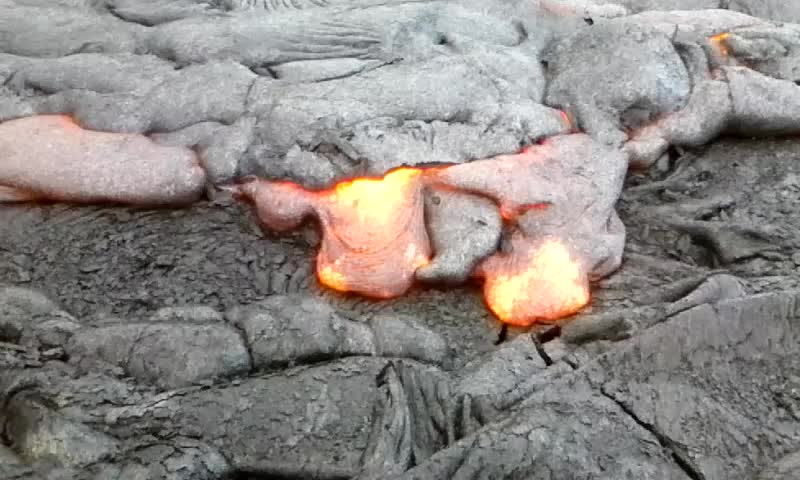
Lava hike 1 video, 6:58 am
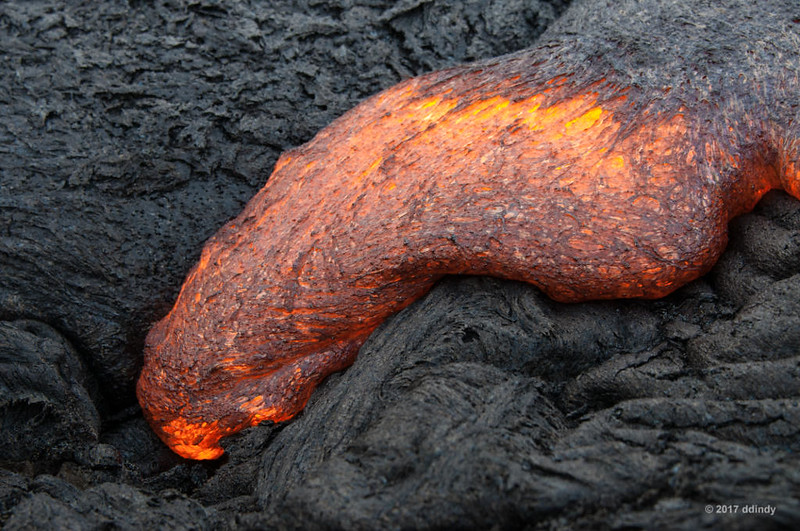
Lava Hike 1, 6:49 am
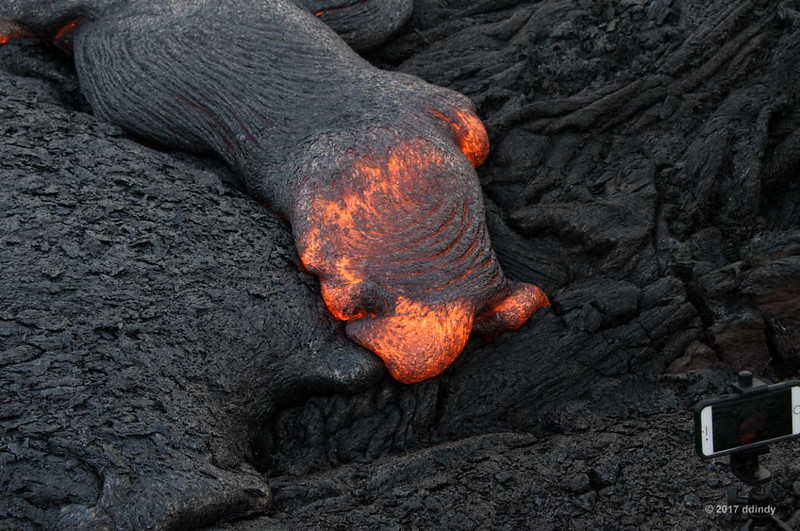
Lava Hike 1, 6:50 am

Lava Hike 1, 6:52 am
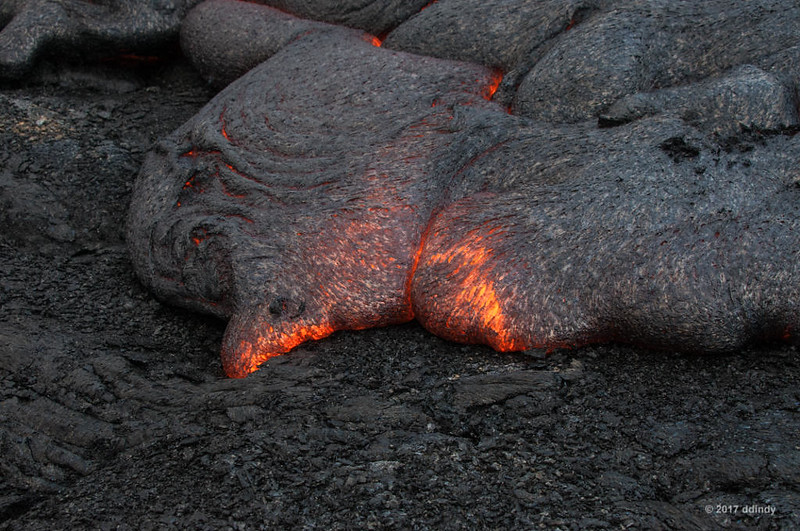
Lava Hike 1, 6:53 am
Here I am taking the photo above. How hot was it? Lava like this is over 1000 degrees. My forearms felt like they were next to a hot fire. (I'm sure @gary can relate to that.) This was about as close as I could get for any length of time. On the plus side, after this, taking food out of a hot oven doesn't phase me any more.
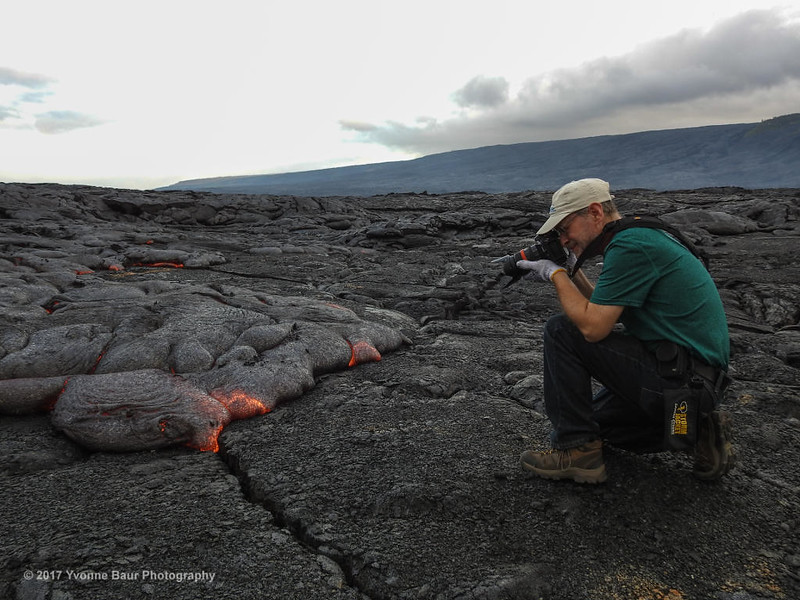
Getting Toasted
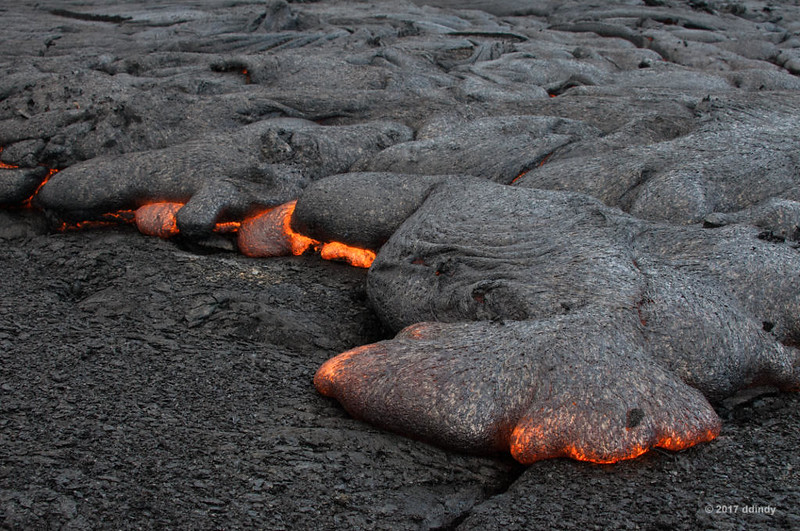
Lava Hike 1, 6:56 am
Things Get Hot!
We're up to Friday, August 25, 2017. We had booked an early-morning lava hike with Epic Lava. That meant getting up at 2 am and driving for an hour to the town of Kea'au where we were to meet our guide at 4 am. On the way, we passed near Kilauea where the red glow from Halema'uma'u crater was clearly visible. I wanted to stop for a photo, but decided it would be better to wait until later in the trip.
Our guide, Yvonne Baur, met us at the designated location. Yvonne is originally from Germany and spent many years in Utah before moving to Hawai'i. She's also quite a good photographer. (More on that in part 8.) We were the only people on the morning tour, which meant we would get all of the attention. We followed Yvonne on the 30-minute drive to Kalapana, where the public road ends and the emergency access road begins. Kalapana was covered by lava in 1990. In the wake of that, there is a parking area and many temporary bicycle rental businesses (for people who don't want to hike to the end of the access road). As we neared the town, we could see what looked like street lights on top of a hill. But those weren't street lights. What we were seeing was lava pouring over the edge of Pulama pali. (Pali is the Hawai'ian word for a steep slope or cliff.) I took that as a good sign.
We parked our car in the Kalapana parking area (really just a wide spot in the road) and transferred to Yvonne's car to drive another mile up the road. The tour company pays a homeowner a small fee to park at the end of their driveway, a much-appreciated saving of two miles of hiking.
The tour company provides all hikers with a small backpack with water, snacks, gloves, a rain poncho and a flashlight. The gloves were for protection in case of a fall in the lava field. Lava can be sharp, thanks to a high silica content, so a fall could be mean a painful hike back. On this day I made a few slips, but fortunately no falls.
We started the hike around 5 am. Why hike in the morning? The lava field is basically a black surface. Imagine an asphalt parking lot on a sunny day. Would you rather walk on that in the morning, before the sun heats it up, or in the afternoon, after it has been baking in the sun all day? That's why a morning hike is better. Plus, if you do it soon after arriving in Hawai'i, your body hasn't had a chance to shift to Hawai'ian time. In the summer, Hawai'i is six hours behind Eastern time. (It's only five hours different in the winter, since Hawai'i does not observe Daylight Saving Time.) I kept telling myself that even though it's 5 am in Hawai'i, it's 11 am back home. It didn't help.
Enough trivia. We hiked two miles along the gravel access road in the dark. For the first half mile, we were instructed to stay quiet, as we were passing several houses and we didn't want to disturb the residents. On the return hike, in daylight, we saw that the "houses" were several very small (one might even say tiny) buildings sitting on the lava. Not anything like what I had imagined in the dark. It's probably the perfect place for someone who wants to get away from it all.
Along the way we passed a couple of locked gates that prevent people from driving down the road. Hikers and bicycles are free to pass. The second gate marked the entrance to Volcano National Park, and is the site of the only comfort facilities (porta-potties) on the hike.

Park Back Entrance
After two miles we reached the "end" of the gravel road. It was blocked at this point due to the current path of the 61G flow from Pu'u O'o to the ocean. At this point, my sister, who had a cataract in one eye that greatly hampered her depth perception, realized that hiking over the lava was going to be difficult, if not impossible. She reluctantly decided to stay put while Yvonne and I headed off in search of lava. Fortunately, it was going to be a cloudy day, so she wouldn't have to worry about the heat.
We turned inland and hiked across the lava field for another two miles. Thanks to many layers of lava over the past 35 years, the hike is far from easy. There's as much up-and-down as there is horizontal progress.

Challenging Terrain
I could see Pulama pali in the near distance with several plumes of smoke indicating lava movement.

Smoke on the Pali
Surprisingly, there were a few areas which had still not been covered with lava.

Surviving Pele
Eventually, I started to feel some heat coming up from the ground. I asked "Is it just me or is it getting warmer?" Sure enough, as we crested the next hill, there it was: actual hot, glowing, moving lava.

Lava Hike 1, 6:45 am
Yvonne uses her phone to make time-lapse videos of the lava. Since she sets it up so close, the video ends when the phone overheats and shuts down. She has to take it away to cool off before shooting another.

Lava Hike 1, 6:44 am
The terrain in the area was relatively flat, so the lava moved very slowly. Actually, ooze is probably the correct word to describe the motion. There was no threat of being overrun by onrushing lava. It was relatively quiet, but the hot lava made a sort of sizzling sound, like meat cooking on a grill. (Click the photo below to view the video.)

Lava hike 1 video, 6:58 am

Lava Hike 1, 6:49 am

Lava Hike 1, 6:50 am

Lava Hike 1, 6:52 am

Lava Hike 1, 6:53 am
Here I am taking the photo above. How hot was it? Lava like this is over 1000 degrees. My forearms felt like they were next to a hot fire. (I'm sure @gary can relate to that.) This was about as close as I could get for any length of time. On the plus side, after this, taking food out of a hot oven doesn't phase me any more.

Getting Toasted

Lava Hike 1, 6:56 am
